Making homes for willow tits —
Christmas trees restoring sand dunes

Our amazing volunteers
Nature needs us more than ever
Protecting Wildlife for the Future
www.lancswt.org.uk
—
SPRING 2024
Patrons
Edwin Booth, Dame Caroline Swift
Honorary Vice President
Baroness Williams of Trafford
Vice President
Ted Jackson MBE
Chairman
Julian Jackson
Vice Chair
Hazel Ryan
Honorary Treasurer
Nicholas Williams
Chief Executive
Tom Burditt
Director of Conservation
Tim Mitcham
Director of Marketing
Lindsey Shaw
Director of Development
Mick Weston
Director of Nature and Wellbeing
Daveen Wallis
Director of Finance
Steve Wood
Editors
Alan Wright
E. awright@lancswt.org.uk
Sub Editors
Jenny Bennion, Lydia German, Amy Shakeshaft
Trust Headquarters
The Barn, Berkeley Drive, Bamber Bridge, Preston PR5 6BY T. 01772 324129
www.lancswt.org.uk
Design
www.nectarcreative.com
Cover photography
Willow tit by Harry Hogg
Lapwing is produced for the Members and Supporters of The Wildlife Trust for Lancashire, Manchester and North Merseyside. Views expressed here are not necessarily those of the Trust.

The Lancashire Wildlife Trust is a Registered Charity (No.229325) and a Registered Company (No.731548) dedicated to the protection and promotion of wildlife in Lancashire, seven boroughs of Greater Manchester and four of Merseyside, all lying North of the River Mersey. Our
After a damp and mild winter, spring is finally here and I am really looking forward to the sights, sounds and smells.
That (mostly) mild winter will have benefitted a lot of our wildlife, especially birds like the kingfisher which we have been getting regular sightings of in Cuerden Valley Park, near our head office. It can be a problem if your food is in a deep freeze under ice for weeks on end. Severe winters can cause terrible problems for our most colourful native bird.
www.lancswt.org.uk 2
xxx xxx Senior Trust Officers
xxx
hard work has made spring brighter
IN TOUCH You can change the way we contact you, or update
KEEPING
Kingfisher takes off from its branch, by Peter Hunter
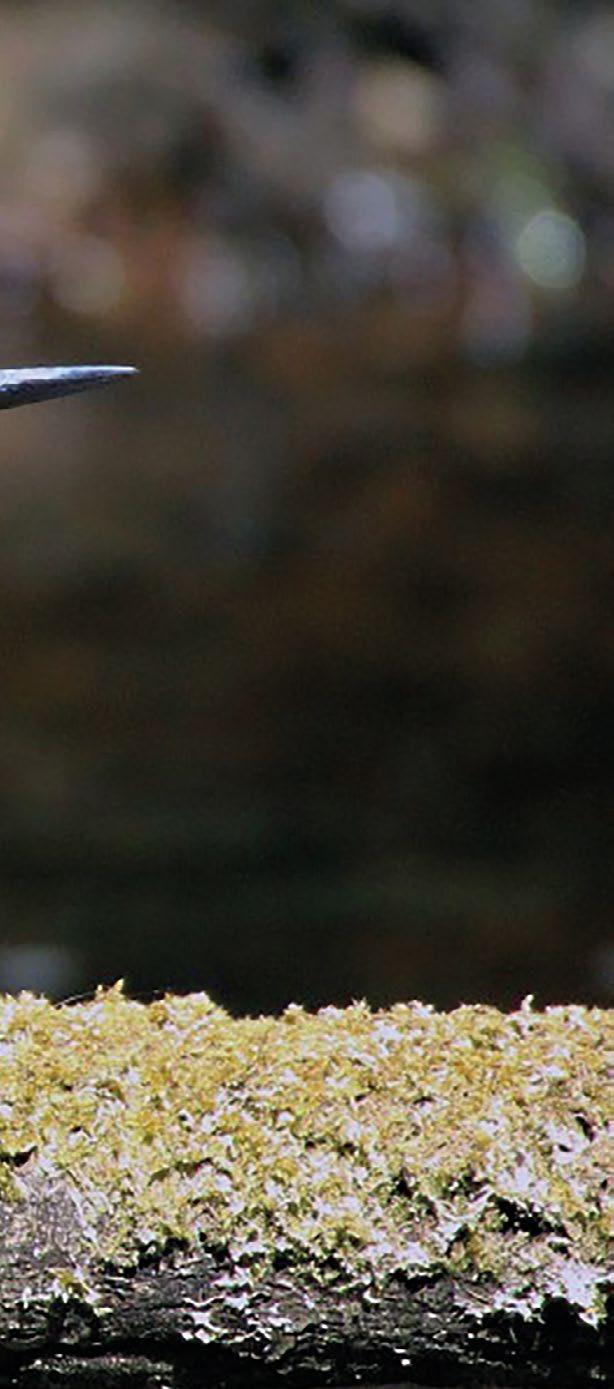

Supported by Fylde Council, Blackpool Council and the Environment Agency, we have created hundreds of metres of extra dunes, protecting homes from erosion, flooding and sea level rise, as well as strengthening the local nature reserve and all the creatures that live there (pages 12-13).
It was great to see so many businesses involved along with the newly formed Rural Crime team from Kirkham. The officers are doing their bit to help us protect sensitive wild areas. The dune project is the perfect example of how taking action for nature can benefit both wildlife and people.
Head to our website to find out how you can support our ‘Step up for Wildlife’ appeal lancswt.org.uk
There were only short spells of snow, so we should hopefully see healthier birds and more electric blue and orange fledglings on rivers and streams near you this year.
Of course, winter is a busy time for all of us at the Lancashire Wildlife Trust, with staff and volunteers out every day, clearing and preparing habitats for the blossoming and flourishing of our plants and animals in the coming months.
If you are walking along the beach at St Annes you will see some of the work we have done. It was wonderful to see nearly 350 staff and volunteers 'planting' over 3,000 recycled Christmas trees in trenches at the start of February. These trees capture sand and create new dunes.
Action for Nature is an ethos that must run through everything we do as a Wildlife Trust, and we must encourage everyone in our region to take actions that will benefit our natural environment. Throughout this edition of Lapwing, there will be examples of people making a difference for nature, but we need you, our members, to spread the word.
One action we all need to take is to speak to local politicians as we approach the General Election. We need to tell them that we are tired of them postponing or scrapping important environmental legislation.
Polls are showing that the vast majority of voters in the United Kingdom want to see nature protected by more regulations, so that we can reverse the biodiversity crisis and help to address climate change (pages 28-29).
I speak to so many of you and feel the passion you have for the birds, bees, butterflies, mammals, fungi and plants all around us, and you understand that none of them can be taken for granted.
No one wants a world that misses out on some of the wildlife wonders that we see on our nature reservesbrown hares boxing, reed-bed dawn choruses and the giant murmurations of starlings and other birds. I cannot –and do not want to – imagine Lancashire without these breathtaking events for future generations.
To ensure the LWT team, our volunteers and supporters have all the resources to continue our vital work, we are running our ‘Step up for Wildlife’ appeal to raise £300,000 in 2024. We already have a great start, with close to £60,000 being raised at the time of going to press. In this Lapwing we look at some of the ways you can help us get closer to the grand total (pages 14-15).
Spring is alive with nature in our region and there are plenty of highlights, like the nuthatch, noisy dawn chorus ‘choristers’ and colourful spring meadows.
It’s a great time to get out into the warmer weather to see some of our amazing wildlife spectacles - and please don’t forget to tell us all about your nature moments.
 Tom Burditt, Chief Executive Officer
Tom Burditt, Chief Executive Officer

your details by speaking to our membership team: E: membership@lancswt.org.uk (01772) 324129
@Lancashirewildlifetrust 3 @lancswildlife
Could boxing brown hares be a thing of the past? By Russell Savory
Why we need to ‘ Step up for Wildlife ’
Our biggest ever fundraising appeal is off to a flying start, so why are people supporting us, and why is it important that we receive even more help? Asks Alan Wright .
The end of 2023 saw us launch our biggest ever fundraising appeal, asking everyone to ‘Step up for Wildlife’ to raise £300,000 and help us achieve that vital target of making 30 per cent of our region available, managed and protected for nature by 2030.
We have been absolutely blown away by the support we have received so far. As we go to press, we are closing in on raising £60,000 in just three months. This has mainly come from you, our amazing members and supporters, digging deep and donating – and we simply cannot say thank you enough.
We are also working closely with our wonderful corporate partners to secure further donations and there are loads of exciting fundraising ideas coming from schools, individuals and community groups. I feel sure we can reach our target by the end of 2024.
I know that nature is close to my heart, and just imagine if we could achieve that goal of 30 per cent of our region being put into nature’s recovery, so that we can get nature close to all of our homes too. I get up at 7am every day to take the dog for his morning walk and to commune with the Lancashire countryside, revelling in the dawn chorus.
Robins, great tits, song thrushes and blackbirds all add to the orchestra of sound. Into the woods and meadows I meet more robins, then wrens. I hear the cuckoo as the woodpecker rattles the trees. Skylarks sing above my head, whilst black-headed gulls, ducks and geese argue noisily on the old mill lodge.
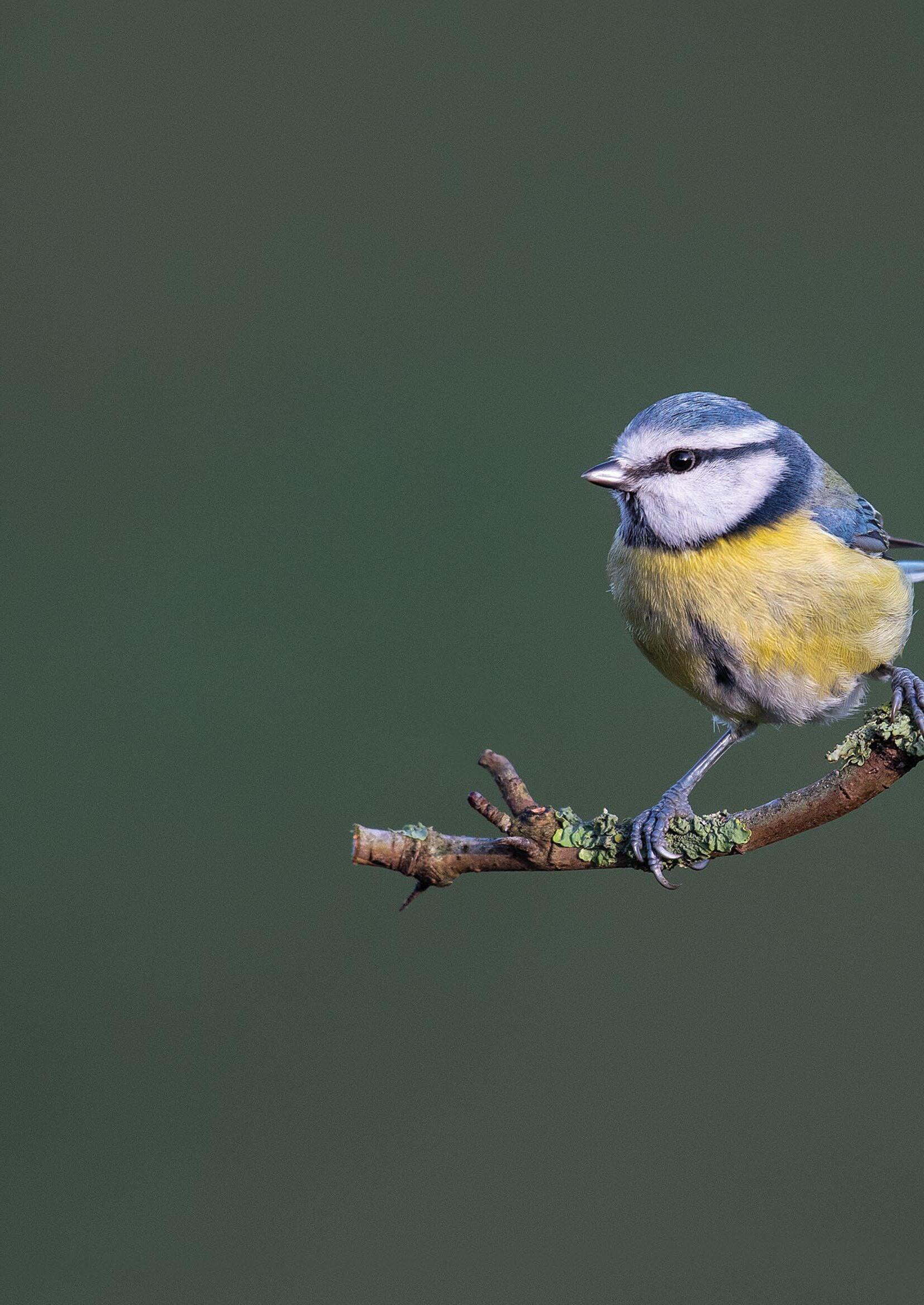
Bushes are like community centres for sparrows, starlings and tits, briefly falling silent as I approach before merrily ignoring me and getting on with their conversation. On our nature reserves I often see deer and brown hares and, on occasion, I have spotted weasels and foxes. Lapwings ‘lap’ around with cormorants, kestrels, buzzards, coots and great crested grebes.
Every day already offers something special - and the insects are only just starting to arrive.
Much of this variety is down to us nature lovers; the management of woodlands, creation of meadows, removal of invasive plants, even my own wildlifefriendly gardening. To foster that love even further we want to make nature accessible for all, maintaining safe paths and fences, and creating opportunities for everyone to connect.
Getting out into the wild is so great for our health and wellbeing but it also gives us an opportunity to fall in love with all our natural world. Supporting the ‘Step up for Wildlife’ appeal will help us to make all of this work go even further.
www.lancswt.org.uk 4
up for Wildlife
Step
"We are closing in on raising £60,000 in just three months. This has mainly come from you, our amazing members and supporters, digging deep and donating – and we simply cannot say thank you enough"
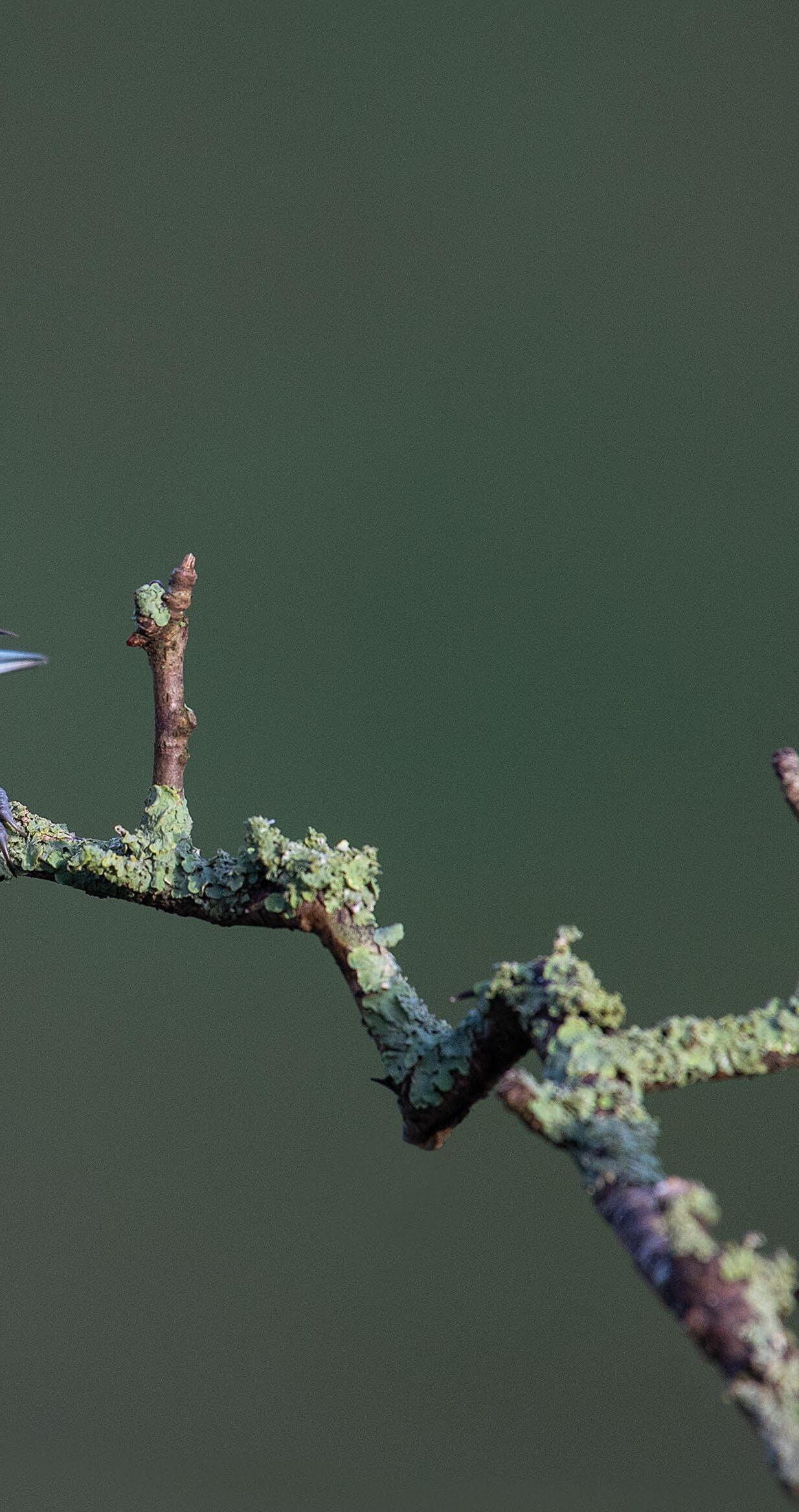
YOUR LAPWING TEAM...
JENNY BENNION Senior Communications Officer ....................................................................
ANNABELLE BRITTLE GMEF Communications Assistant
TOM BURDITT Chief Executive Officer
LUCY COXHEAD Fundraising Officer
ALEX CRITCHLEY Peatlands Communications Officer
KATE ELLIS Lunt Meadows Learning Officer
LYDIA GERMAN Senior Content & Campaigns Officer
The funds raised will be used to pay for and support our conservation and advocacy work, helping us to get the message out that we have to start reversing our dual climate and nature crises, and supporting us to make the changes on the ground to do that.
Whether it is sending us a donation (no matter how big or small), getting involved in fundraising, or helping to spread the word about the ‘Step up for Wildlife’ appeal, every little really does help. Thank you.
Head to our website to find out how you can support our ‘Step up for Wildlife’ appeal
lancswt.org.uk
ROLAND HOWARD Wigan Greenheart Communications Officer
JENNY JOHNSON Head of Marketing & Income Generation
MEGAN KELSALL Partnerships Officer
AMY SHAKESHAFT Communications & Campaigns Assistant
HANNAH STEVENSON Marketing Manager
MATTHEW SWIFT Marketing Officer ....................................................................
KIRSTY TYLER Nature & Wellbeing Communications Officer ....................................................................
ANNA-MARIA WHITE Action For Nature Communications Officer ....................................................................
ALICE WOOD Marketing Support Officer
ALAN WRIGHT Head of Campaigns and Communications
@Lancashirewildlifetrust 5 @lancswildlife
tit,
Blue
by Peter Smith
Making the connection
Wildlife corridors can be vitally important for threatened species such as willow tits, says Roland Howard . Wildlife
Developing a thorough understanding of why, where, when and how species move can present a major challenge in planning species conservation and land management. Making this link between movement ecology and wildlife protection is therefore a key factor in planning site interventions and prioritising the recovery and protection of threatened species.
Willow tit numbers have been in sharp decline since the mid 1970s. This endearing yet timid species is red list classified, amongst a growing list of birds under threat and considered as being of highest conservation concern. Indeed, the willow tit is the most endangered small bird in the United Kingdom.
Willow tits tend to fly relatively close to the ground and usually stay within a limited range of around half a kilometre. Willow tit population density is often quite low, with pairs living in separate territories, away from other pairs.
The Flashes of Wigan and Leigh National Nature Reserve, sitting at the heart of the Great Manchester Wetlands Nature Improvement Area, forms part a wider, critical network for willow tits across the north west of England. The aim of the ambitious Wigan Greenheart Landscape Recovery scheme is to benefit wildlife and people by creating and connecting greenspaces across the borough of Wigan.
"The willow tit is the most endangered small bird in the United Kingdom"
Around five per cent of the UK’s willow tits can be found in Wigan and its surrounding areas, making it somewhat of a stronghold for the species. Their ideal habitat is made up of wet willow woodland along with scrub, bramble, nettle and hawthorn in abundance.
Willow tits build nest holes in decaying wood, often birch or willow. They are black, pale brown and white in colour and easily confused with marsh tits. However, they can be identified by a pale panel on the wings, a sooty black cap and bib, along with a distinctive, nasal ‘zee zee zee’ call.
The Defra funded Environmental Land Management scheme is based on the principles set out in Sir John Lawton’s 2012 report, Making Space for Nature: of more, bigger, better and more joined up [spaces]. The long-term, 20-year scheme will be vitally important in helping to protect rare and threatened species, such as willow tit and bittern, by transforming and connecting their habitats.
Karl Horne, Wigan Greenheart Project Officer, explained: “We are using willow tit records and combining different datasets to map population densities. This approach gives us clues to discover potential corridors of movement across the wider landscape.”

Dr Mark Champion, Senior Landscape Recovery Officer, added: “We’re particularly excited about the possibilities this methodology offers. We can look at the data at different levels of granularity, identifying clusters from individual records, and building an overall picture. We can then replicate this process to look to other species to inform our management plans.”
Identifying likely routes of species movement could allow land managers, in the long term, to create stepping stone habitats across the wider landscape and thus greater opportunities for landowners and farmers to implement more nature positive land management practices.
www.lancswt.org.uk 6
Volunteers creating willow tit habitat, by Jessica Fung
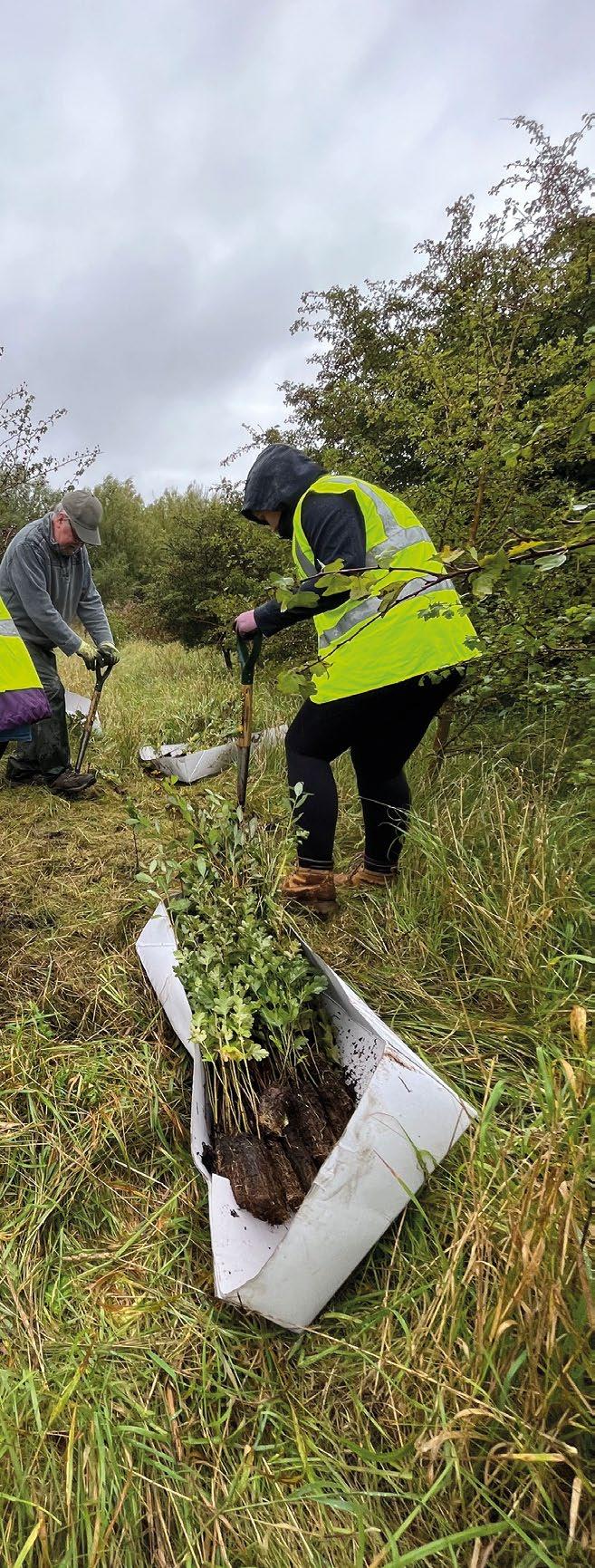
These efforts could also help facilitate the wider dispersal of the notoriously sedentary willow tit.
Reserve officers from your Wildlife Trust have already been busy improving habitats for willow tits and water voles at Viridor Wood and Barlow’s Farm respectively, working with volunteers in collaboration with Forestry England and Wigan Council.
It may just be one little bird, but creating willow tit corridors could have a big impact.


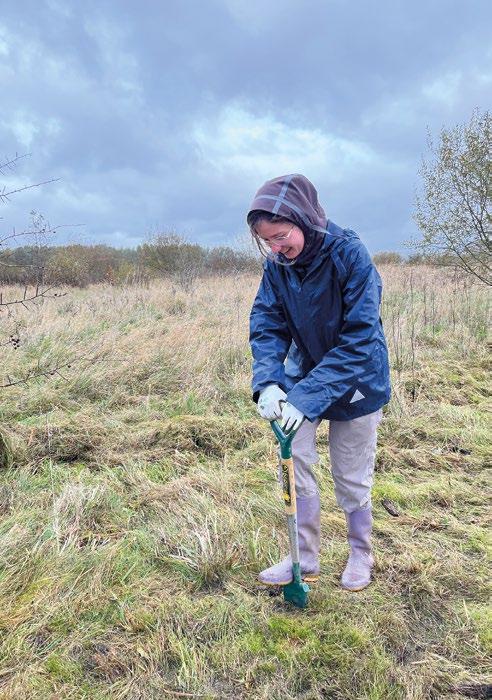
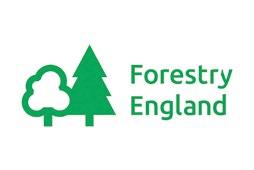


@Lancashirewildlifetrust 7 @lancswildlife Find out aboutopportunitiesvolunteering in your area at lancswt.org.uk/ get-involved/ volunteer
Colleagues and volunteers creating willow tit habitat, by Jessica Fung
Using mapping helps to identify where to create wildlife corridors
Planting new habitat for willow tit, by Jessica Fung
What ’s been happening at Lunt Meadows?
Exciting times here at Lunt Meadows, from crowddrawing winter visitors, important conservation work, and delivering fun hands-on sessions in local primary schools. Learning Officer, Kate Ellis , gives us an update.
Lunt has been alive with large flocks of birdwatchers praying to get a view of some of our rarer winter visitors. It’s been a game of 'Where’s Wally' trying to spot the visiting North American cackling goose and green-winged teal amongst our usual Canada geese and Eurasian teals. However, our favourite visitor so far this year has to be the striking male smew.
These sleek birds are winter visitors from Scandinavia and Russia. Although more commonly seen in the sunnier south east, smews are a rare UK visitor especially as our winters become warmer. Males are even rarer to see as they’re a bit lazy and like to stay close to home.
Cutting breaks into the reedbeds removes thatch and any old materials that have built up, creating muddier edges that are an important habitat for waders. It also opens up greater viewing areas which help us to see some of our more elusive residents, such as water rails and bittern, and allows us to better record what is going on in the reedbeds.
The biggest obvious change on the site is our new Learning Centre. This wooden log cabin was built in Carnforth and delivered and built as a huge jigsaw. The main construction of the building is now finished, and the bespoke fitting out of the inside is currently underway.
"our conservation volunteers always get stuck in no matter the task, and our education volunteers are invaluable in helping to deliver the outreach sessions."
Wetlands are an important stop off for migrating birds and it is clear these exciting visitors are enjoying all the hard work our conservation team have been putting into improving the site for wildlife. If you have been on site this winter, you have probably caught a glimpse of them hard at work in the thick of the reedbeds.
The wood used in the classroom fit-out is from our very own Mere Sands Wood, cut, dried and conditioned by LWT staff and volunteers. Our building is thermally efficient and has a warm, cosy and welcoming atmosphere. Visitors will be able to learn about wildlife, Sustainable Urban Drainage solutions, and Mesolithic Archaeology, all over a cup of tea or coffee.


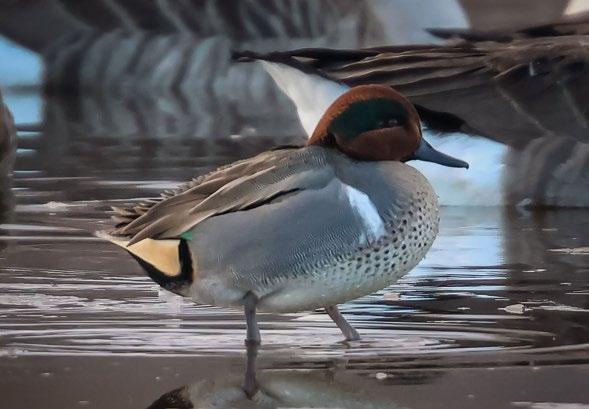
www.lancswt.org.uk 8
Lunt Meadows
Mesolithic couple knitted by Lynn Hoggs, by Kate Ellis
The new Learning Centre, by Cheryl Ashton
Green winged teal wading at Lunt Meadows, by Bob Hurrell




We have underfloor heating using the latest air-source heating technology, and we will be adding electric charging points to the parking area. We are all very excited about our new Learning Centre which includes a specialised classroom, where lifelong learning opportunities will take place, and which will also open out onto a sensory garden. This will finally allow us to welcome school groups onto the site.
The centre will also provide a dedicated room for our intrepid volunteers, so that they can enjoy some well-deserved refreshment and rest on some of those more challenging weather days.
We have also been focusing on engagement with local schools through the development of fun, hands-on outreach sessions which are delivered in the schools themselves. Each session is bespoke and themed around the Stone Age. So far, we have attended five primary schools and engaged over 200 year three and four pupils - and they have been proving a great success, with lots more sessions booked.
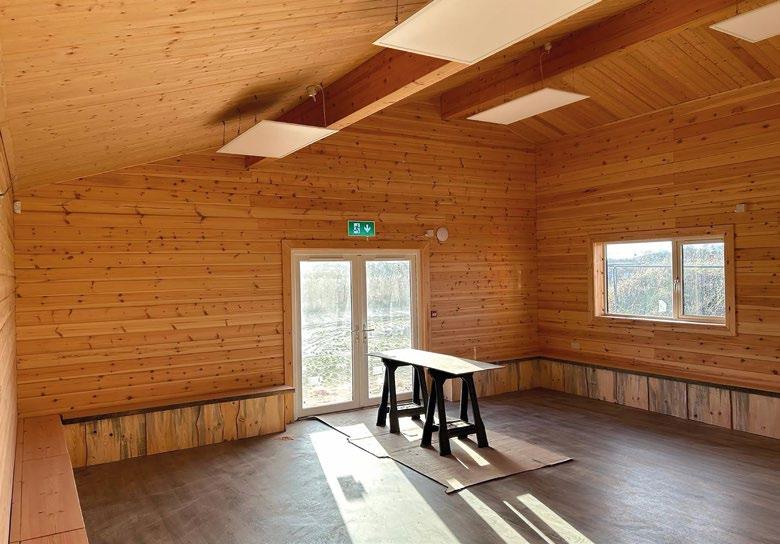

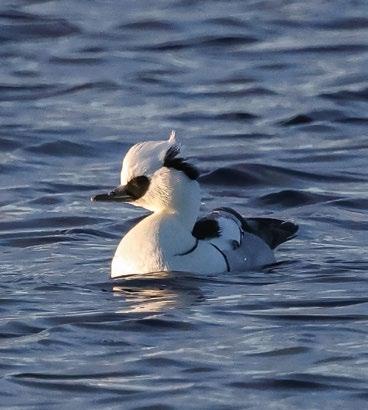


Volunteers play a key part in our work, and we couldn’t do what we do without them. Our archaeology volunteers diligently sort and digitise finds, our conservation volunteers always get stuck in no matter the task, and our education volunteers are invaluable in helping to deliver the outreach sessions. Not forgetting our wonderful grazing volunteers who, no matter the weather, regularly check on our conservation grazing herds.
Our volunteers are also super-talented and generous, as highlighted in our fantastic gift from Lynn Hogg, one of our red squirrel volunteers – our very own knitted Mesolithic couple, Tawny and Flint. Thank you Lynn.
And for even more exciting news... As you may already be aware, the National Trust has purchased some of the surrounding land at Lunt to put it into nature’s recovery. We are excited about the opportunity to work with them to create a mosaic of different areas and habitats, making Lunt even more of a wildlife haven.
Also, in collaboration with our invaluable partners, the Crosby Lions, we successfully received funding from the Screwfix Foundation. This funding will allow us to build our accessible and relaxing sensory garden. This will be located outside the classroom section of the Learning Centre. Inclusivity is something that we are passionate about and we look forward to the work commencing.
We also run lots of events and talks on site at Lunt Meadows. These range from owl talks featuring Molly the beautiful barn owl, to Stone Age skills sessions and themed events such as an Easter egg trail, solstice celebrations and a Halloween bat walk. These events have been fantastic in engaging our local community and promoting the conservation work we do at Lunt.
Look out for upcoming events at Lunt Meadows - we would love to see you there
9 @Lancashirewildlifetrust @lancswildlife
Smew at Lunt Meadows, by Bob Hurrell
Stone Age outreach sessions with St Luke's Primary School in Formby
Inside the Learning Centre Classroom, by Cheryl Ashton
Nature ’s acrobats
With their Adam Ant eyeliner and acrobatic antics, nuthatches are one of our most distinctive birds. Jenny Bennion tells us why this stunning bird is one of her favourites.
Nuthatches aren’t always the most frequent garden visitor, but I’m delighted to say that a pair are regular guests at my bird feeders. And I simply love them. So much so that in a recent redecorating scheme I announced that we should paint the kitchen the colour of a nuthatch's back.
Nuthatches have some of the most striking plumage of the birds that visit my garden. Their steely blue back and wings are offset by buff underparts, which scale up to a reddish-brown in some males. But the thing that really makes them stand out is that deep swipe of black from their rapier-like bill, across their eyes and down to the top of the wings. It’s reminiscent of many an 80s popstar and makes them the superstar of my feeder watching daydreams.
But it's not just their looks that are dazzling. Nuthatches have cornered the market in bird acrobatics. They have incredibly long and powerful toes (almost like crampons) which allow them to not only scurry up tree trunks, but also headfirst down. And across. And upside down. This headfirst descent is peculiar to nuthatches and makes them a pleasure to watch.
These acrobatics have a serious purpose thoughother than just for my viewing pleasure. Nuthatches scuttle up and down tree trunks and branches, using their sharp beak to furtle around under shards of bark looking for the insects and invertebrates that make up much of their diet. They can also be seen using that same beak to store away nuts and seeds in fissures and crevices in tree bark to see them through the sparce winter months.

You can spot nuthatches scuttling up and down trees in many of our woodland nature reserves, including at Boilton Wood and Longworth Clough
www.lancswt.org.uk 10
Wildlife
Thirsty nuthatch, by Peter Smith

Retrieving those hidden goodies is what gives nuthatches their name. Coming from the original Middle English ‘nuthak’ which literally means ‘nut hacker’, describing them using their pointy beaks to dig into the nuts they have stored.
If you aren’t lucky enough to have nuthatches visiting your garden, the best place to find them is in their preferred habitat of mature broad-leaved woodland. Historically nuthatches were only found in southern and central areas of the UK, but the effects of climate change has seen their population expand northwards.
We have had nuthatches in our patch for some time now, and their boundaries now include East Lancashire where they were rarely seen even 20 or 30 years ago.
It's great to be able to give you some good news about a species for once, with the population of nuthatches increasing by an estimated 250 per cent since the 1970s. However, we do have to temper this with the pressures that the loss of woodlands could have on their numbers, and that whilst the effects of climate change have proved positive for nuthatches, there are so many of our other most beloved species that will not fare so well.
"Nuthatches scuttle up and down tree trunks and branches, using their sharp bill to furtle around under shards of bark looking for the insects and invertebrates that make up much of their diet."

Book offer : The Moths of Lancashire
Did you know that Lancashire is home to 1,570 species of moths. Find out more in this landmark publication.
A must for all lepidopterists, and anyone else who loves moths and wants to know more about the myriad of species we have on our doorstep, ‘The Moths of Lancashire’ is the first comprehensive assessment of this wonderful species since the 1940s.
Based on nearly two million records from 1829 to 2022, and including new species up to autumn 2023, it has contributions from over 2,400 recorders and features 2,500 photographs. This book has all that you need to know.
If you hurry and order your pre-publication copy before 1 May 2024, you will receive the book for just £29.95 + £4 p&p.
Order online: www.naturebureau.co.uk/ bookshop
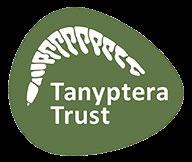
11
@Lancashirewildlifetrust @lancswildlife
Nuthatch, by Leslie Price

It ’s Christmas forever in our sand dunes
This year’s annual Christmas tree ‘planting’ event at the Fylde Sand Dunes was another huge success. Anna-Maria White tells us more.
Christmas may be over, but the spirit of goodwill continued when 342 volunteers and staff members from your Wildlife Trust, our partners, businesses, schools and community groups descended onto the north beach at St Annes to participate in the annual festivity of ‘planting’ recycled Christmas trees into the sand dunes.

There are loads of ways that we can all take action for nature. Find out more at lancswt.org.uk/ action-for-nature
In just two days over 3,000 trees were buried into trenches along the beach, covering a distance of 600m along the precious coastline habitat. Over the last decade this fantastic project (a partnership with Lancashire Wildlife Trust and Fylde and Blackpool Councils and funded by the Environment Agency) has helped to extend the dunes by a whopping 90m. This is 90m more natural coastal defense for nearly 500 residents and businesses along the coast, and 90m more precious sand dune habitat.
The trees are placed into the sand at a 45-degree angle facing out to sea, perfectly positioned to catch wind-blown sand and kickstart the formation of new sand dunes.
www.lancswt.org.uk 12 Action for nature
Some of the hard-working spades involved in this year’s event
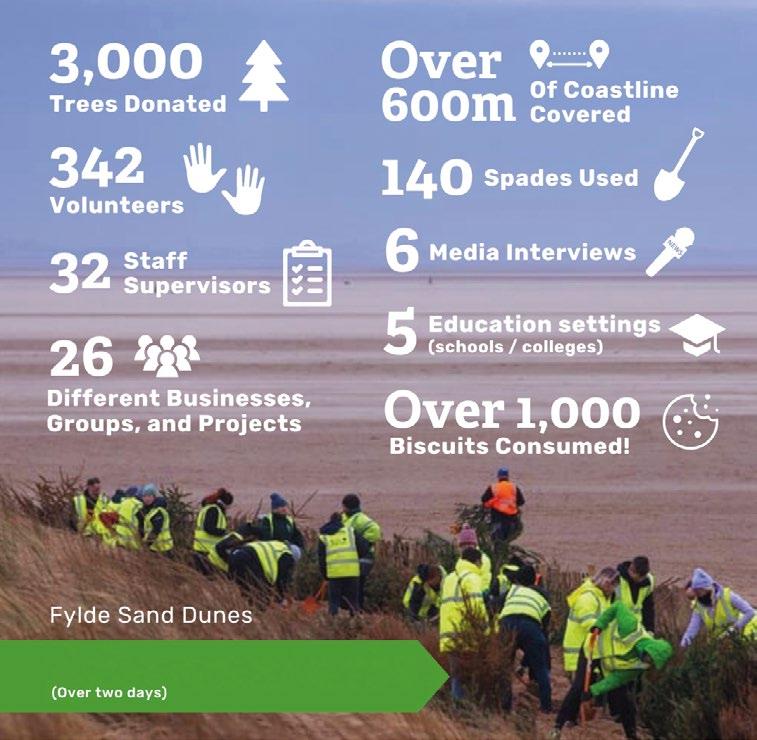

This helping hand speeds up nature’s process; what would normally take up to 100 years will be well underway within six months to a year.
Sand dunes are important coastal habitats for both humans and nature alike. There are over 280 plant species recorded on the Fylde Sand Dunes, including several internationally rare plants which are endemic to sand dunes in the UK, including the interestinglynamed Isle of Man cabbage. Now that there is a dune system to support them, we have also been able to reintroduce a population of sand lizards, one of the UK’s rarest reptiles.





Not only are the sand dunes now a wonderful place for people to enjoy and get a breath of bracing sea air, but they also provide crucial soft flood defenses from ever-rising sea levels and further erosion. Since 1900 the UK has already seen a 16cm sea level rise, and this could be up to 1.5m by the end of the century, so this kind of naturebased solution is increasingly vital.
However, the Fylde coast has seen a vast reduction of the sand dunes over time due to pressure from commercial development in the area, combined with historical use of sand harvesting for industry.
Fylde Council manages the sand dunes to ensure that the remaining 20 per cent of the sand dune system is protected and can be made more resilient through initiatives such as Christmas tree ‘planting’.
Whether it is donating your old tree, volunteering to help with the collection of trees, coming along on the day or simply spreading the word, getting involved in the project is an amazing way that you can take action for nature and really make a difference. A huge thank you to each and every person who helped to make this year’s event as amazing as ever.
"Since 1900 the UK has already seen a 16cm sea level rise, and this could be up to 1.5m by the end of the century, so this kind of nature-based solution is increasingly vital."
13
@Lancashirewildlifetrust @lancswildlife
Some of this year’s Christmas trees, by Amy Pennington
Volunteers getting stuck in, by Lydia German
Satellite images show the extent of new dunes created Christmas Tree Planting
Put a spring in your step for wildlife
Our ‘Step Up for Wildlife’ appeal has leapt past its first £50,000 milestone and Lucy and Laura from our fundraising team have some inspiring ideas for supporting this critical campaign.
Spring has arrived and we hope to encourage our members, supporters and friends to come up with wonderfully bright and innovative ideas to put the fun into fundraising. Raising money for wildlife is a brilliant way to give back to the natural world and give yourself an extra dose of motivation to take on your chosen challenge. The lovely nursery group from St Thomas’ CE Primary School in Bury have had a busy few months of fundraising, all in aid of our ‘Step up for Wildlife’ appeal.
Perhaps you’ve felt inspired by Miss Birks’ class, and want to get your school involved too? Is there a star baker amongst your class, ready for their time to shine in a bake sale? Or could your workplace put a spin on your own ‘Welly Womble’ and arrange a sponsored ‘Wear your Wellies to Work’ day?
You can start your own fundraising journey today by downloading our fundraising pack. It’s full of ideas and inspiration to get you started.
"We have lots of wild ideas to help inspire you to fundraise, but one important purpose. We are working tirelessly to help protect the wildlife you know and love."
The group have been selling their homemade bird cakes for £1 each and raised an astonishing £120 at their Christmas Fayre. They were having so much fun that they didn’t want to end their fundraising there – class teacher Miss Birks said they were so inspired that they went on to organise a ‘Wildlife Welly Womble’.
Donning their raincoats for a classic Lancashire February day, they splished and splashed around their local area, spotting wildlife and enjoying the wonders of nature. Their efforts in walking over two miles brought their fundraising total to an amazing £300. We cannot thank them enough for their support.
Spring is the perfect time to take on an outdoor fundraising challenge. We're lucky to have such a diverse landscape within our region - why not use these places as an inspiration for your fundraising?
Could you challenge yourself to walk or run around as many of our reserves as possible? Or organise a sponsored species spot – how many wildlife sightings could you tick off in a month at our reserves?
We have lots of wild ideas to help inspire you to fundraise, but one important purpose. We are working tirelessly to help protect the wildlife you know and love.


It’s because of people like you, with your membership support, kind donations and fundraising achievements, that we can continue to ‘Step up for Wildlife’.
So, we encourage you to pull on your running shoes, get those baking trays out and help us achieve our appeal target. We cannot wait to see the incredible ways you choose to fundraise.
If you have a fundraising activity planned, we’d love to hear about it so that we can support you along the way. Let us know about your plans, head to lancswt.org.uk/let-us-know-aboutyour-fundraising-plans or contact fundraising@lancswt.org.uk
www.lancswt.org.uk 14 Fundraising
Fundraising Officer Lucy and the class at St Thomas', by Lucy Coxhead
Serving up fancy cakes at The Kingfisher Trail Festival at Philips Park a few years ago


Download our fundraising pack filled with loads of ideas and information


Put a spring in your ‘Step up for Wildlife’ event
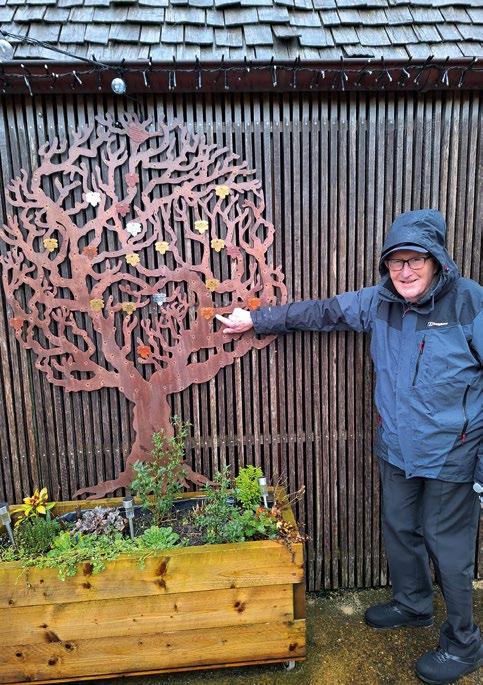
A gift that keeps on giving...
Our memory trees are a loving way to celebrate. Colin’s family got in touch to celebrate him being a “lifetime ambassador for community action” with a dedicated leaf on our memory tree as his Christmas present.
We think it’s clear from the photos that he loved his leaf. Thank you to Colin and his family for sharing their special memories with us at Brockholes on our memory tree.
There are many times in life where we get together in celebration, whether it be Christmas, a birthday, a wedding, a new arrival or simply to remember special moments in nature. A leaf on our memory tree is a wonderful way to mark the occasion whilst protecting wildlife.
Coffee Invite friends round for a coffee morning with funds going to ‘Step up for Wildlife’. Cake Bake cakes and sell them or add them to your ‘Step up for Wildlife’ event.
A walk, cycle or run
Why not run or walk in wildlife-themed fancy dress? Sponsored events are great fun and a good excuse to get outdoors and into nature.
Dance, skip, hop
Get yourself sponsored and do something dynamic.
Getting others involved
Ask your school, workplace, sports or social club to hold an event to raise money for ‘Step up for Wildlife’.
We have memory trees at both Brockholes and Mere Sands Wood, and they are surrounded by wildlife and a soundtrack of beautiful birdsong. A visit to see your memory leaf is a lovely way to connect with the nature your donation is helping to protect.
To find out more about our memory leaves visit our website.
15 @Lancashirewildlifetrust @lancswildlife
Get dressed up for a sponsored walk, by Paul Heyes
Organise a wildlife spotting day, by Ross Hoddinott 2020VISION
Colin Cooper and his memory leaf, by Bev Moorhouse
Hunting out hidden peat
As the Wildlife Trusts push for legislation to ban the use of peat in compost, Alex Critchley investigates where else peat could be hiding and what we can do about it.
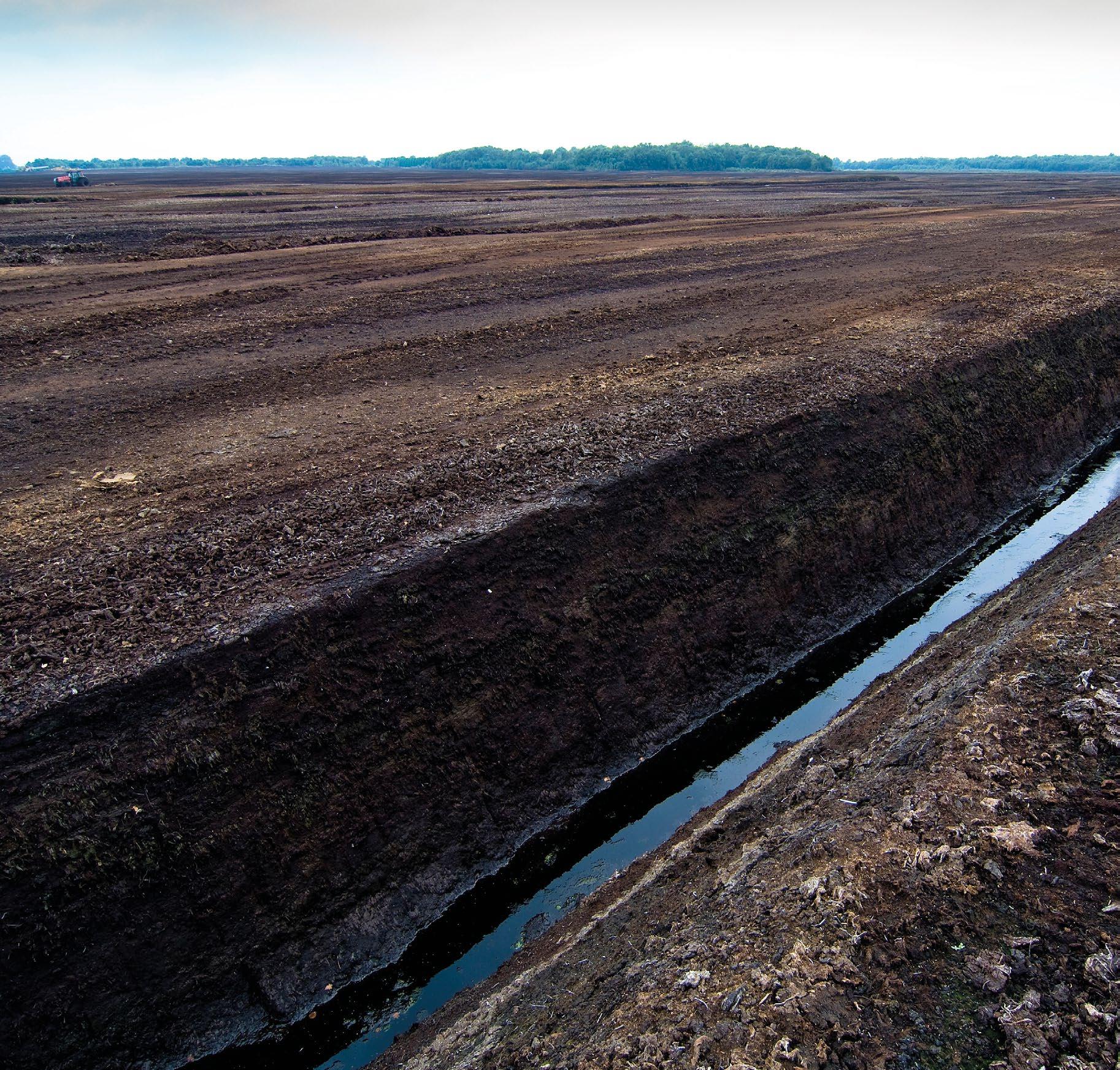
The extraction of peat for horticulture has had a huge impact on our peatland habitats and wildlife, leading to their mass-scale destruction whilst also contributing heavily to the climate crisis. This is an issue your Wildlife Trust has been tackling since the 1990s, working to restore these areas back to their naturally biodiversity boosting, climate change challenging, flood fighting, boggy ways.
We have campaigned hard against the use of peat in bagged compost, resulting in a promised 2024 ban which is still yet to materialise.
So, whilst we continue to do everything we can to make the ban law, we are also turning our attention to other places where peat could be hiding, giving you the information you need to make an informed choice before purchase.
Where is peat hiding?
Potted plants are one of the most obvious culprits with many of the plants we buy from the garden centre, supermarket or online being grown in peat-containing compost. However, precious few plants have clear labelling saying whether or not they are peat-free.
One of the biggest offenders is houseplants. This social media favourite has seen a huge rise in ‘houseplant parents’, but information on whether or not a houseplant is grown in peat can be incredibly hard to find. And don't forget those pots of herbs you find at the supermarket – their labels rarely state anything about their growing media.
Whilst we are on the subject of food, mushrooms can cause a real peaty problem, with most large-scale commercial mushroom growing using extracted peat. This can also be the same for lots of the leafy salads sold in supermarkets.
www.lancswt.org.uk 16 Campaigns
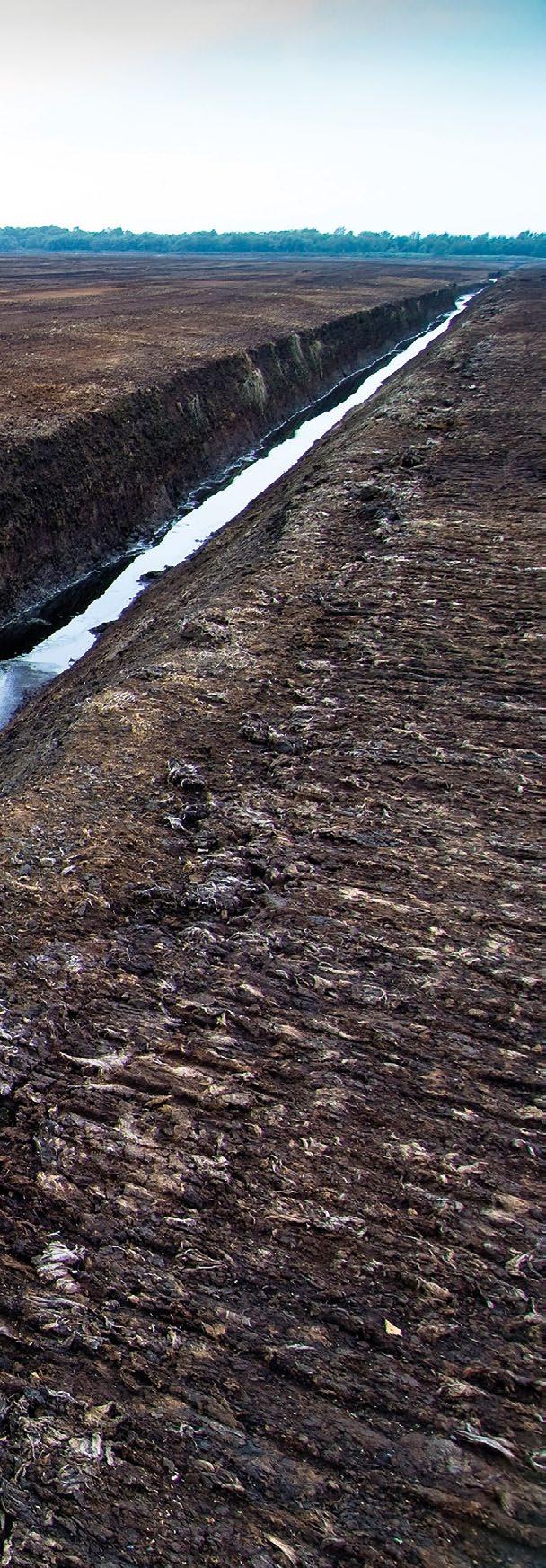
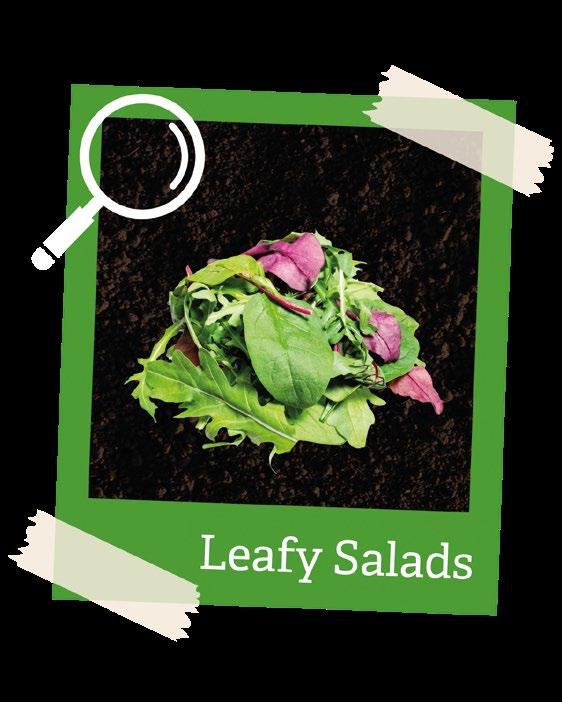
Sign up to be a peat inspector at wildlifetrusts.org/ ban-sale-peat
What can we do about it?
We are calling for better labelling and transparency about the use of peat across all sectors, before once and for all getting peat removed from supply chains. But we need to know how bad the problem is – exactly how easy is it to find information about peat? That’s why we need you to be our eyes and ears and become a band of roaming peat inspectors.
Being a peat inspector will be quick and easy but could provide us with the real-world data we need to see how bad the problem is and form the basis of our case against hidden peat.
"We have campaigned hard against the use of peat in bagged compost, resulting in a promised 2024 ban which is still yet to materialise."

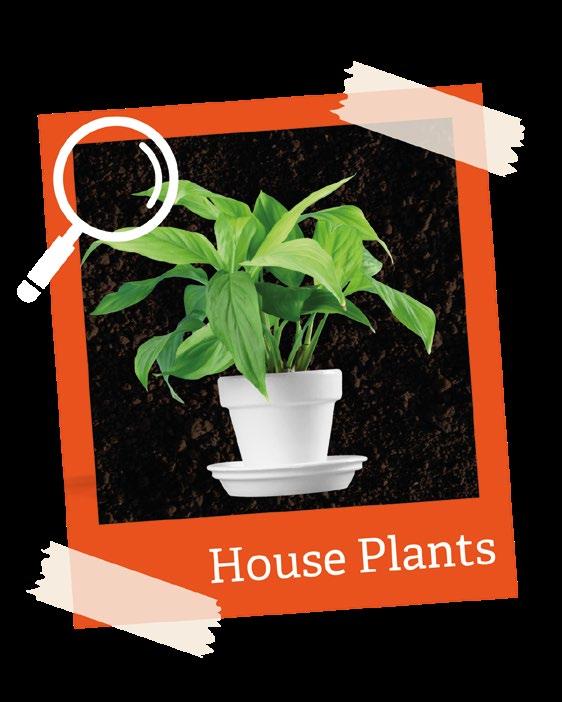
Whether you are in the supermarket doing your weekly shop or on a trip to the garden centre, we will be asking our peat inspectors to let us know how easy it is to find information about whether a product either contains or has been grown in peat.
Enough is enough.
Our environment needs us, our climate needs us, our peatlands need us. Let's come together and make a stand to root out hidden peat.


@Lancashirewildlifetrust @lancswildlife
Peat extraction
at Little Woolden Moss, by Matthew Roberts
Turning up the volume on nature ’s soundtrack...
In a world of increasing urban noise, it can be hard to connect with nature’s melody above the din, says Amy Shakeshaft .
Traffic, alarms, construction work… even our domestic appliances chirp to let us know when the washing is done – it all contributes to drowning out the sound of nature.
But there are a few songbirds who rise above the rest, competing to make themselves heard. Robins, wrens, warblers, blackbirds and song thrushes provide the natural soundtrack to our lives, bookending our days at dawn and dusk with their chorus.
When we quieten down for the evening, a songbird’s work is still not done. This is the time when our noisy neighbours can take centre stage and really sing their hearts out.
Robins are known for their confrontational nature and territorial tendencies. So it’s no surprise that these red-breasted beauties are one of our loudest and proudest songbirds in the UK. Their song is bright and cheery, with a steady rhythm which stops and starts. Their warbles, whistles and pauses put them high on our list of noisiest birds.
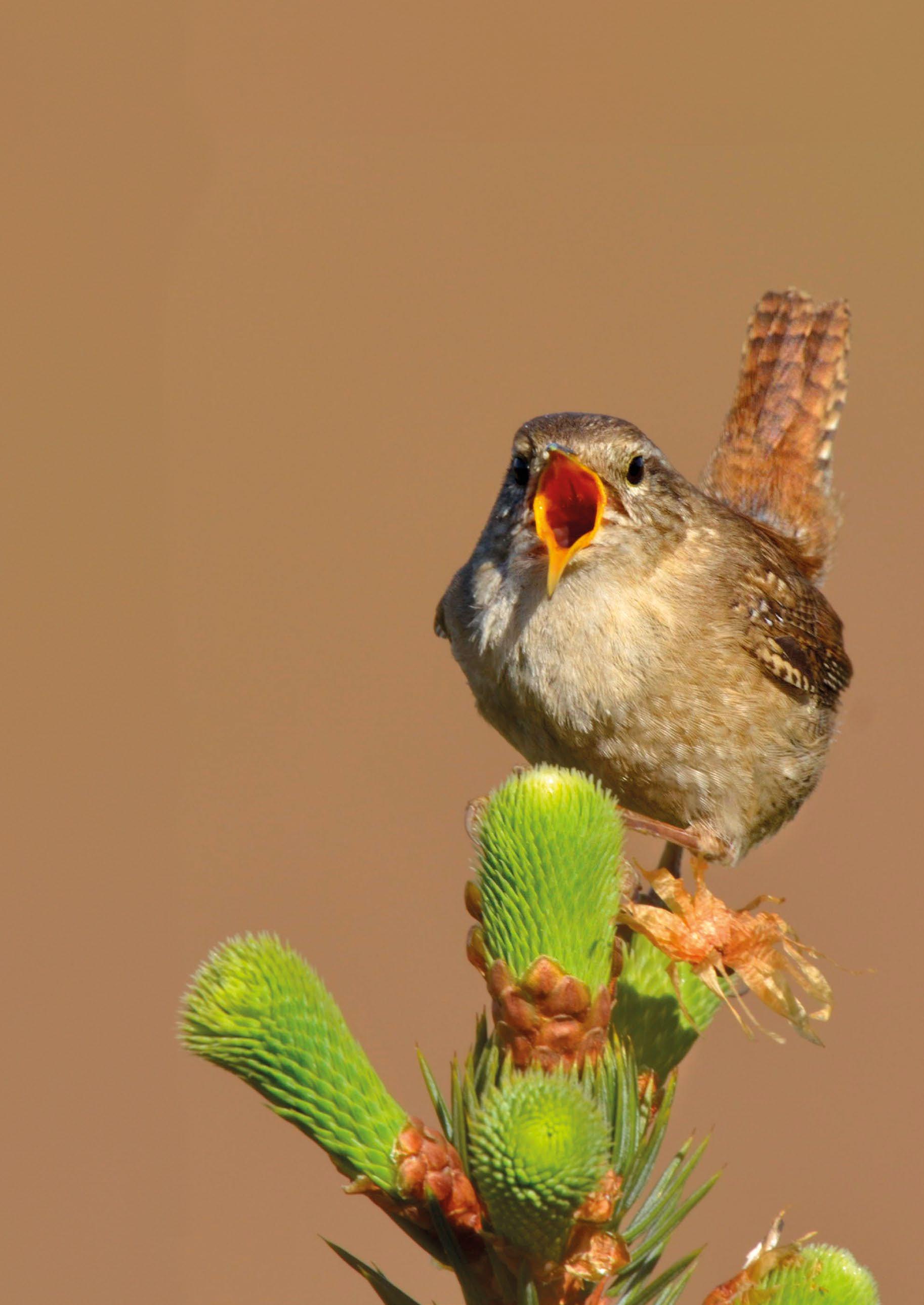
Donate to our ‘Step up for Wildlife’ appeal to help us support our wonderful wildlife. lancswt.org.uk/ appeals/ stepping-up
www.lancswt.org.uk 18
Wildlife
Wren, by Andy Rouse

Robins are industrious birds, the first to join the dawn chorus and the last to finish serenading at dusk. They are particularly light sensitive, meaning that streetlights and porch lights can trigger singing in the middle of the night, especially in areas of heavy light pollution.
Song thrushes are so called because they repeat phrases in distinctive, high-pitched, short bursts. Their melody is more reserved and monosyllabic than other thrushes. This song is starkly different to their urgent alarm call. With a striking chequered chest, long legs and big round eyes, they also bring star quality to the stage in their fashionable feathers.
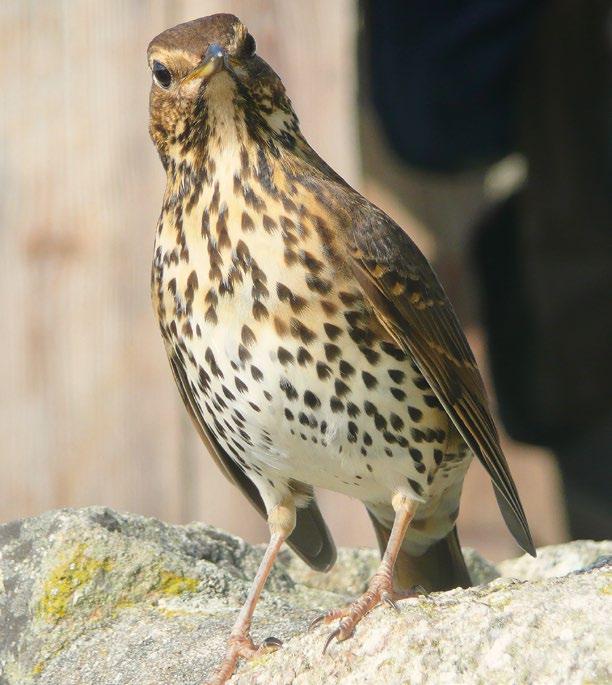

However, the number of song thrushes has declined. They are harder to attract to our gardens than the rowdy robin or bold blackbird, as they are fussy about where they eat their favourite snail snacks. A behaviour unique to these noisy neighbours is how they eat their favourite treatby bashing the shell against a rock to get to the meat inside. You can help by tempting them into your garden with sunflower hearts or suet pellets spread on the ground.
Wrens are noisy little birds which have a lot to say for themselves. Pleasingly plump, long-legged with a narrow bill, they make up for their tiny size with a deafening voice. Their music is a clear, shrill, perky song, which gives way to a stern ‘tchk!’ when alarmed. Wren song is identified by a high-pitched guttering rattle towards the end.
Easily spotted by a trademark tail cocked defiantly behind them, wrens are a welcome sound in woodland, urban areas and farmland. Listen out for them singing to the high heavens from hedgerows and low bushes.
The wonder of warblers is that each type has its own call and song, characterised by buzzes, whistles and thrills. Warblers are shy, preferring to be heard rather than seen. We begin to hear willow warblers in April, once they have returned from wintering in sub-Saharan Africa. A soft, melancholic ‘hoo-eet’ is the surest way to listen out for this bird.
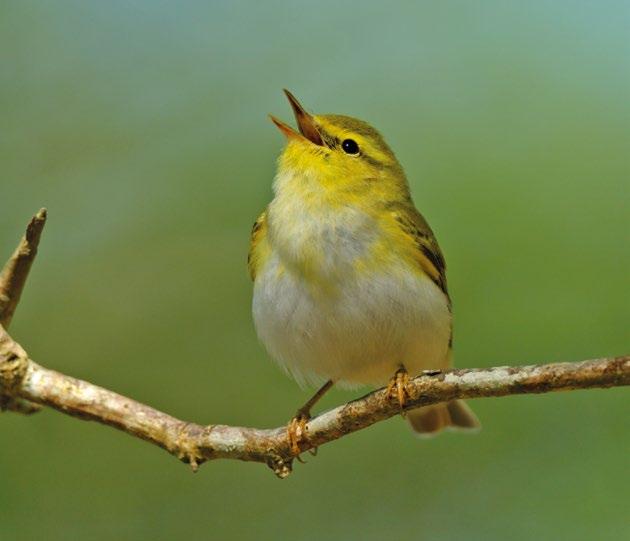

Blackbirds are one of our most common garden birds. Blackbird song is languid and soothing. They mark their mellow music with short pauses between phrases, and quickly give out a harsh, scolding call when alarmed. Listen out for these black beauties on summer evenings.
It is no surprise that listening to bird song has been shown to have a positive effect on our mood, inspiring feelings of tranquillity and oneness with the wild world. Unfortunately, this relationship does not flow both ways, as the noise level of human habitation negatively impacts the habits and happiness of our songbirds.
We challenge you, whether you are a bird-call expert or birdsong beginner, to unplug and appreciate this urban verse in your garden, on your commute to work or weekend walk.
"It is no surprise that listening to bird song has been shown to have a positive effect on our mood, inspiring feelings of tranquillity and oneness with the wild world."
19
@Lancashirewildlifetrust @lancswildlife
Robin, by Gillian Day
Song thrush, by Karen Lloyd
Song thrush, by Vaughn Matthews
Wood warbler, by Andy Rouse
Blackbird, by Sam Hockaday
Our wild future
There’s so much going on in the world right now, we thought we’d put some of your questions to our CEO, Tom Burditt .
As Chief Executive of the Lancashire Wildlife Trust, what worries you most about the future of nature?
The headlines from the recent UK State of Nature report make for grim reading. One in six species are threatened with extinction. We have 18 per cent fewer pollinating insects, 34 per cent fewer pest-eating ladybirds and over half of all flowering plant species and nearly two thirds of all mosses and liverworts have declined in terms of where they are found.
I am equally alarmed by statistics about the accessibility of nature. Data from Natural England calculates that one in three people do not live within 15 minutes' walk of a natural greenspace - the basic level we deserve for our health and wellbeing. How will we, as a society, be able to look after the natural world if, for so many of us, it doesn’t form a part of our daily lived experience?
It worries me that wildlife is increasingly something enjoyed by the few; and that less and less of us will notice, or care about the declines until it is too late.

What can I do to support nature’s recovery?
This year, as part of our ‘Step up for Wildlife’ campaign we’ll be launching a range of materials to help everyone; individuals, landowners, developers, schools, the public sector… to take accessible, impactful and effective actions for wildlife.
The most obvious examples are well known. Leaving wild areas in gardens (or lobbying your housing association to do so), planting native flowering plants for pollinators, volunteering at a nature reserve or with a local community group, even the way you vote. I love anything that you can do yourself at home because it is just so satisfying, making a pond or installing swift boxes or swift bricks.
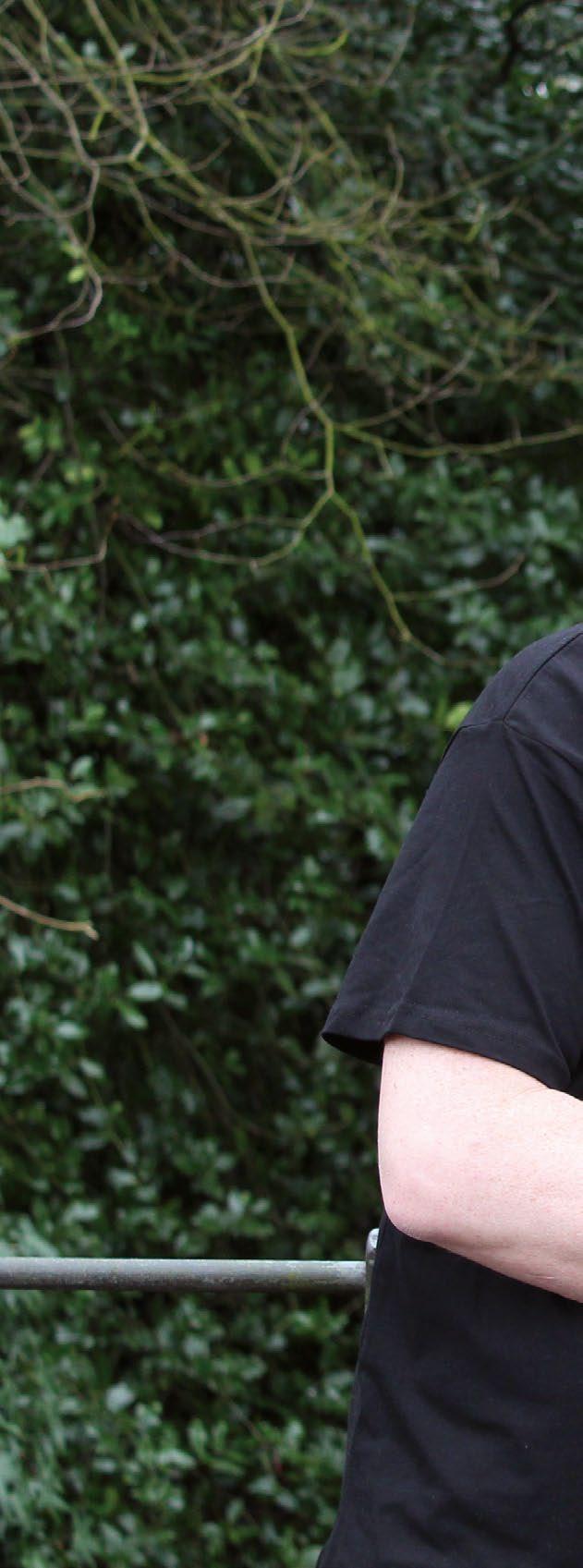
Small projects which you can do with others like your neighbours are the most fun and satisfying of all, so working together to de-pave and re-seed a bit of ugly concrete wasteland at the end of your street, or re-wilding a ginnel with pots or planters for wildflowers, herbs and veg.
Of course, it might be that you’d rather support us at Lancashire Wildlife Trust. We have some great fundraising ideas to raise money for our appeal. One of my absolute favourites is the ladies of Sefton, who raise money for red squirrel conservation by knitting red squirrels to sell in their online Etsy shop.
www.lancswt.org.uk 20 Tom ' s view
Adding a pond is fantastic for wildlife, by Emma Robertshaw



Why it is more important than ever to #VoteWildlife in 2024?
We as The Wildlife Trusts want to see 30 per cent of land and sea in nature recovery by 2030, so whoever wins this election will be the party responsible for that target being achieved... or not.
When we went down to Parliament last autumn with members of our Youth Council and the knitted creatures that our wonderful supporters had made, I was struck by how much (regardless of party affiliation or national policy) the MPs we met with were really interested in the work we are doing.
They wanted to help and support positive wildlife action in their local constituencies. The issue is that (a) they often don’t know enough about the work going on, (b) they don’t always know exactly how the national policies they vote on affect their local wildlife back home, and (c) they don’t realise just what a big issue wildlife conservation, or good quality accessible local greenspace, is to their constituents.
So, it is vital not just to cast your vote with wildlife in mind, but also to tell your potential politicians –be they MP, Councillor or MetroMayor – in advance that you care about wildlife and to let them know that their local and national policies will be influencing how you vote.
21
@Lancashirewildlifetrust @lancswildlife
Katharine Fletcher MP and members of our Youth Council, by Lydia German
Some of the amazing knitted creatures, by Lydia German
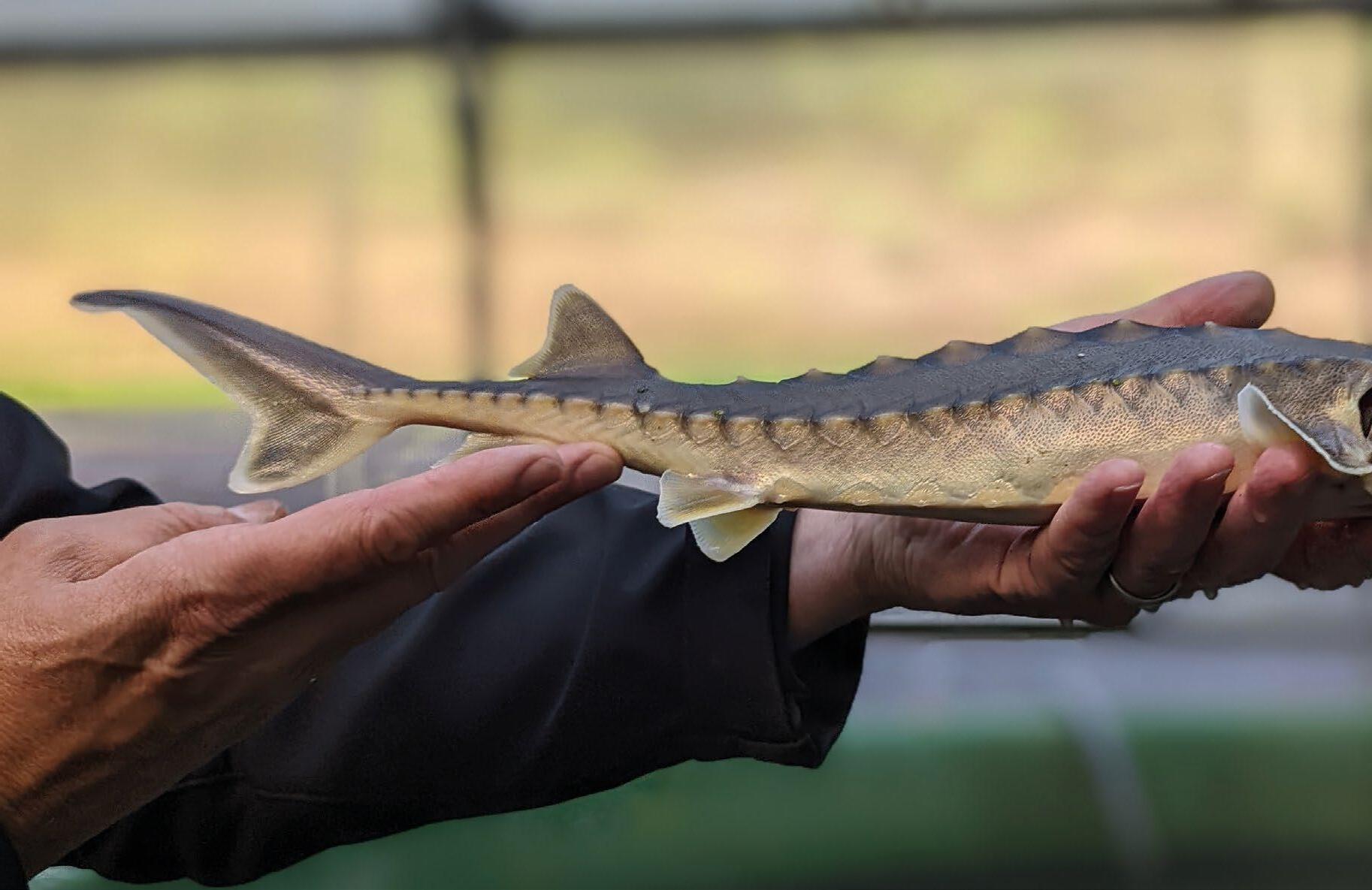
What species would you most like to see returning to the north west?
This one might surprise you but probably the sturgeon. It totally blew my mind when I discovered that these mighty, globally critically endangered, prehistoric, five-metre long fish would have been present in the north west until about 100 years ago.
There would have been feeding and nursery grounds in the Mersey and Ribble Estuaries, and near my home on Morecambe Bay, with spawning grounds in freshwater sections of the Lune, Ribble and Mersey.
Last year I was lucky enough to see the sturgeon reintroduction project in the Biesbosch National Park near Rotterdam, so know it is feasible even in densely populated areas...
Is there any good news?
What the State of Nature report showed is that conservation in action works, especially where local people, landowners and environmental organisations like ours work together at scale.
Otters are a recent Greater Manchester success story. Hunting and pesticide pollution drive otters to near extinction, just 20 years ago they would only be sighted in three small water bodies in the area.
But improvements to water quality and riverside habitats have seen numbers bounce back with sightings in every borough and confirmed breeding. It's also good news for urban hedgehogs, whose numbers are starting to recover.
Simple steps such as gardeners leaving wilder, messier areas with logs and long grass, not using slug pellets and installing hedgehog highways allowing them to roam from garden to garden, have made a real difference.
We have seen nightjars, bitterns and marsh harriers return through restoration work on our nature reserves like Lunt Meadows, Chat Moss and Wigan Flashes. I don’t think it is a coincidence that all these success stories are some of the more mobile species. So, creating nature corridors between wild places is key.
I am excited about the Green Northern Connections project which our Trust is leading on behalf of Nature North. We are working with linear infrastructure providers like National Highways, National Grid, Network Rail, Canal and Rivers Trust and Sustrans to use their landholdings to provide better connectivity for wildlife.
We know that through your support and our work, we can make a difference.
www.lancswt.org.uk 22
view
Tom ' s


Don ’ t miss the NLWG Wildlife Fair
Sunday 16 June - Fairfield Orchard, Lancaster
The North Lancashire Wildlife Group are holding their annual Wildlife Fair in June and it’s a must for any wildlife lover. With free entry and free activities, everyone is welcome to come and explore our local wildlife.
The fair will be filled with habitat exhibits and photographic displays, and there will be fun children’s activities, moth trap surveying, pond dipping, 10 minute pollinator surveys, and lots of 30 minute themed wildlife walks.
Check out nlwg.org.uk for more information, or contact robszsz@yahoo.co.uk
"We have seen nightjars, bitterns and marsh harriers return through restoration work on our nature reserves like Lunt Meadows, Chat Moss and Wigan Flashes"
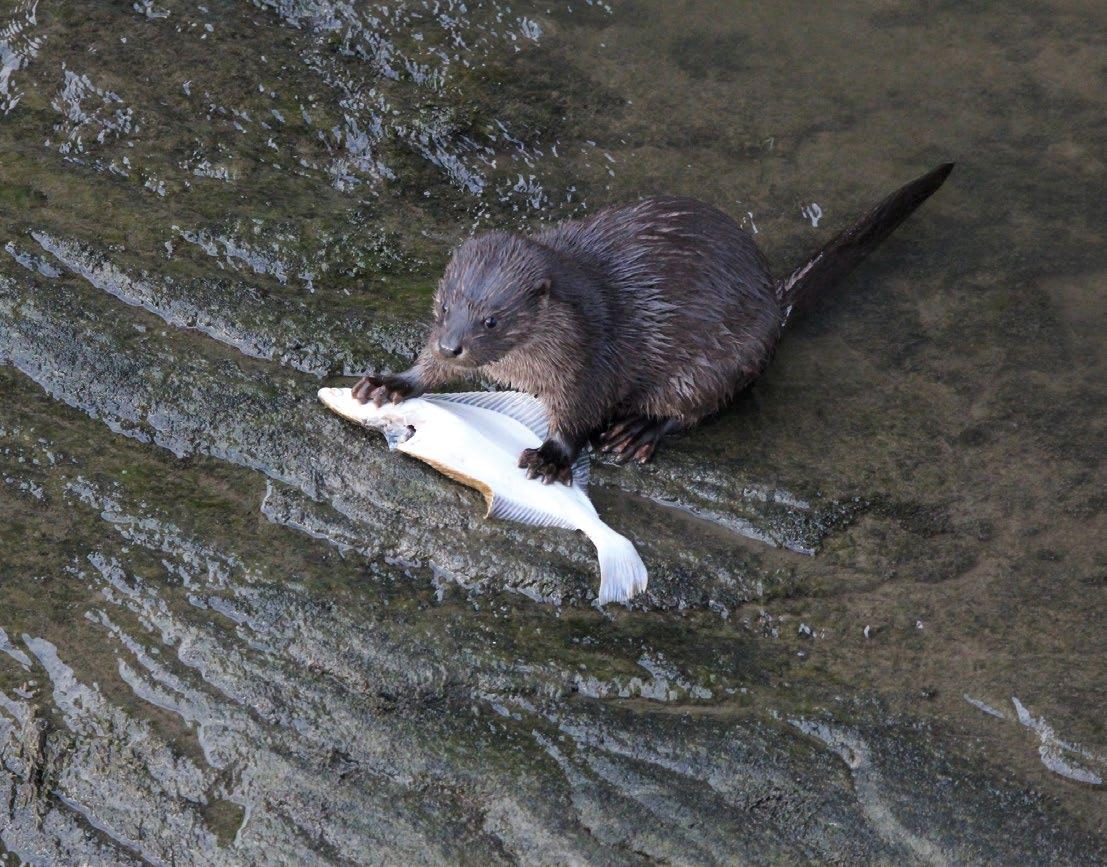

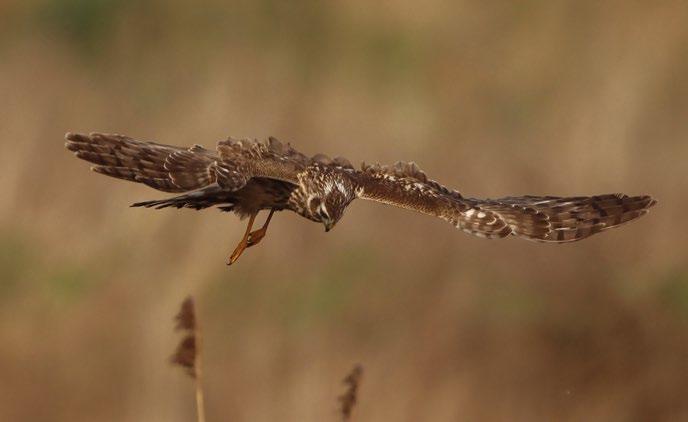
23 @Lancashirewildlifetrust @lancswildlife
Nightjar, by David Tipling 2020VISION
Marsh harrier, by Phil Boardman
Otter, by Chris France
Juvenile sturgeon, by Blue Marine Foundation
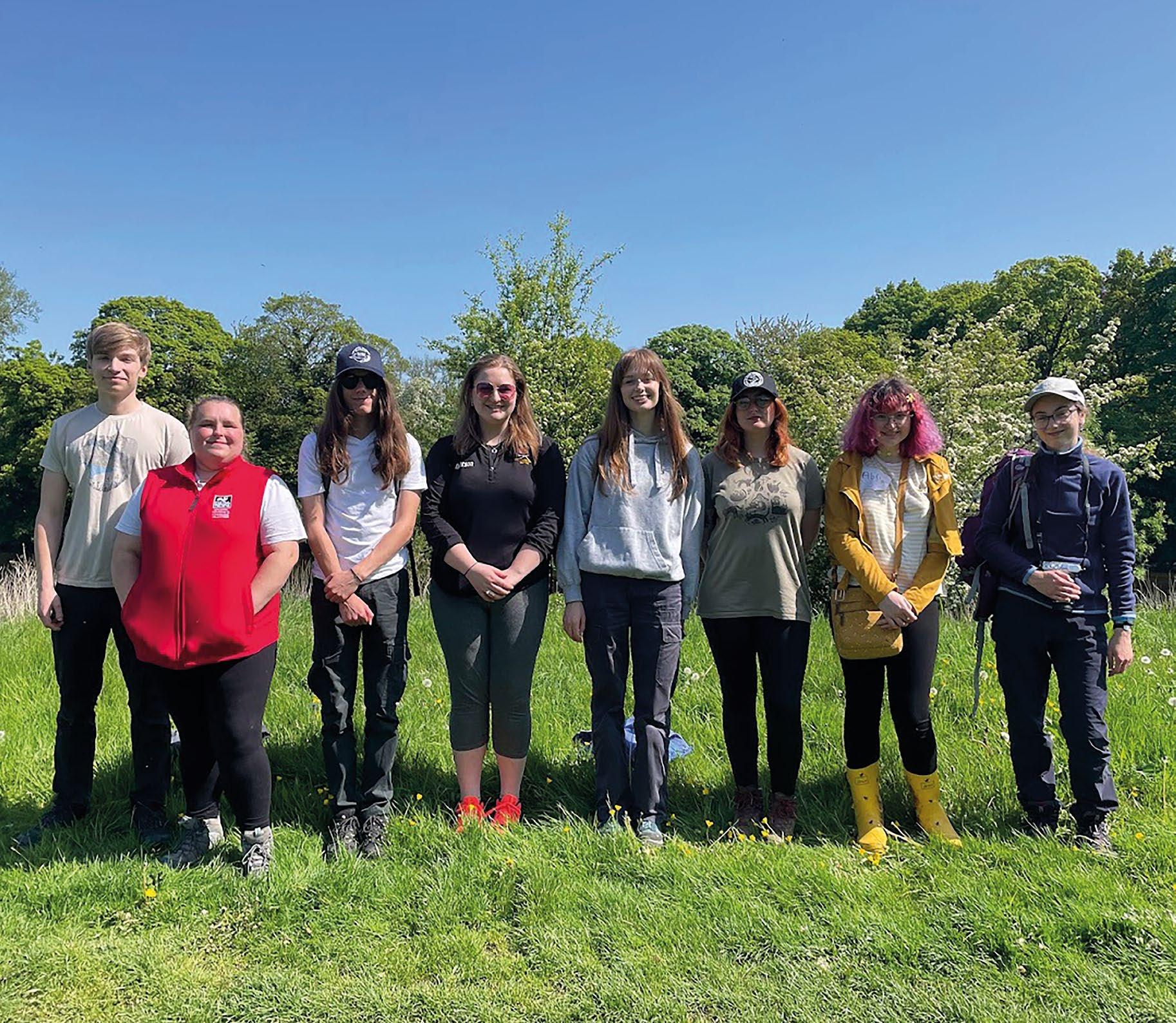
Heroes taking Action for Nature
There are so many individuals, community groups, schools, colleges and businesses working hard to help nature in our region. Lydia German shares details of all the award winners from our Supporters' Day.
Our annual Supporters' Day at the University of Central Lancashire is a celebration of our work, your support and our volunteers.
It includes our annual Action for Nature Awards, which acknowledge and celebrate the inspiring stories of people doing amazing things to aid nature’s recovery. Our staff, volunteers and members could all put names forward for each of our 10 categories, alongside details of why they should win.
The final awards were decided by a panel of judges – of which I was one – and it was so lovely to read all the incredible nominations that came flying in. Each category had some serious competition, and it made our job as judges difficult.
www.lancswt.org.uk 24 Action for Nature
Young Person of the Year, Euan Norman, is part of our Youth Council, by Izzy Cook
"The final awards were decided by a panel of judges –of which I was one – and it was so lovely to read all the incredible nominations that came flying in."
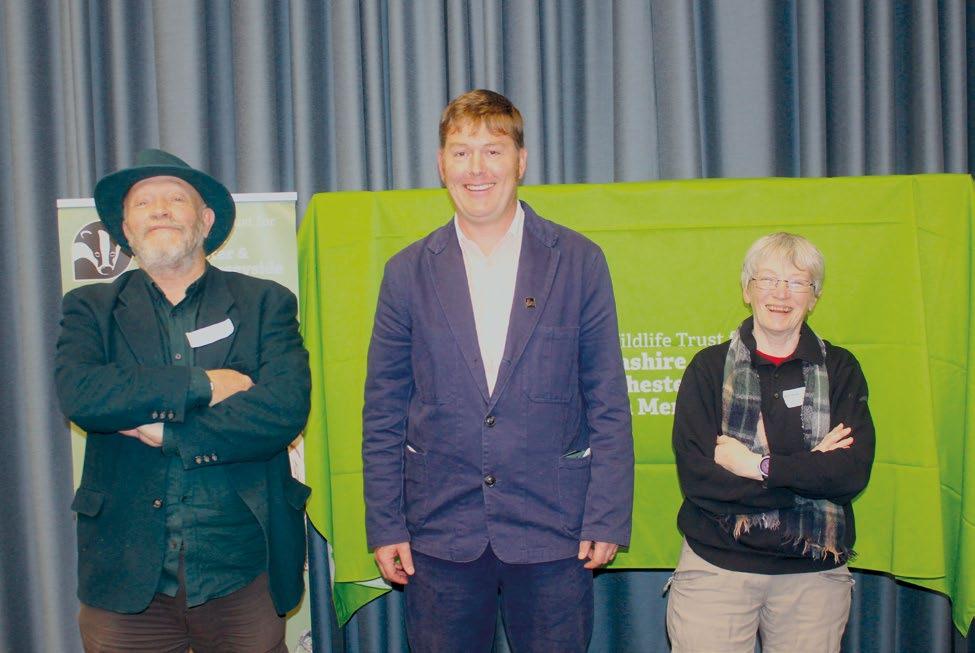

After much deliberation we finally picked our winners, who were then invited to receive their award, a customised planter. This was presented to them by our Chief Executive, Tom Burditt, and our then president, Chris Davies.
Unsung Hero
-
Shaun Garrigan
Shaun started volunteering with MyPlace in 2017 and as such is the longest-serving volunteer for the project. He left a career in banking and started a new chapter of his life, giving time to young people experiencing poor mental health and supporting us to connect them to the natural world. His dedication and compassion knows no bounds and has made such a difference to so many.
Young Person of the Year
- Euan Norman
Since being appointed as a member of our Youth Council, Euan has designed and delivered bird identification workshops at the Manchester Festival of Nature, represented our Youth Council at the UK youth4nature – Urban Nature Day in Liverpool, and delivered a marine-themed workshop for Generation Sea as part of National Marine Week.
He was a member of Lytham Wildlife Watch Club from age 5-12 years and then volunteered to help run the activities. Our future is in safe hands with young people like Euan.
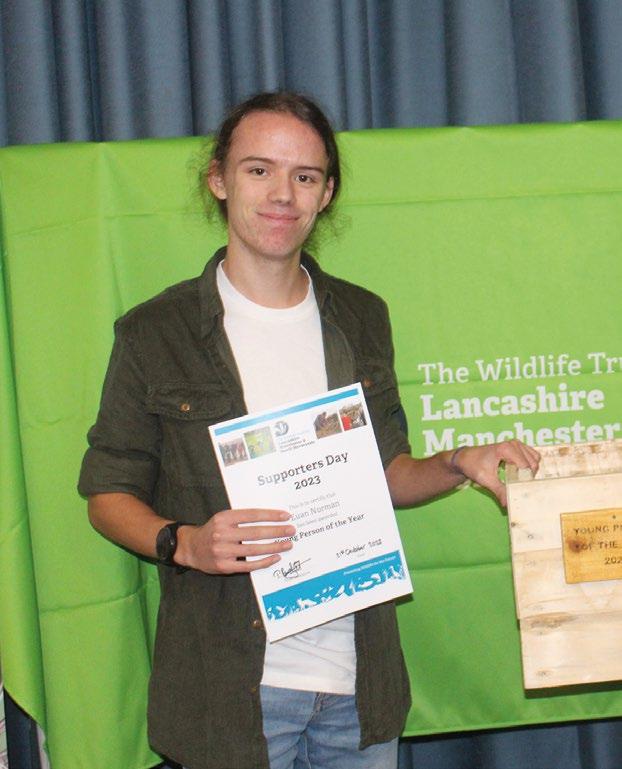
Most Inspirational Volunteer of the Year
- Ann Shaw & Francis Williams
This award was won by two people who come as a team. Since introducing us to the art of hedgelaying in 2019, they have overseen the laying of 282 metres of hedgerow at Ashton’s Field, in Salford, 190 metres at Philips Park, in Bury, and 185 metres at Cutacre, in Tyldesley, all using hand tools and in the traditional Lancashire style.
They are a force to be reckoned with and are absolutely invaluable, passing their knowledge onto others with extreme joy and passion.
25
@Lancashirewildlifetrust @lancswildlife
Most Inspirational Volunteer of the Year - Ann and Francis with Tom
Unsung Hero Award - Shaun Garrigan
Young Person Award - Euan Norman
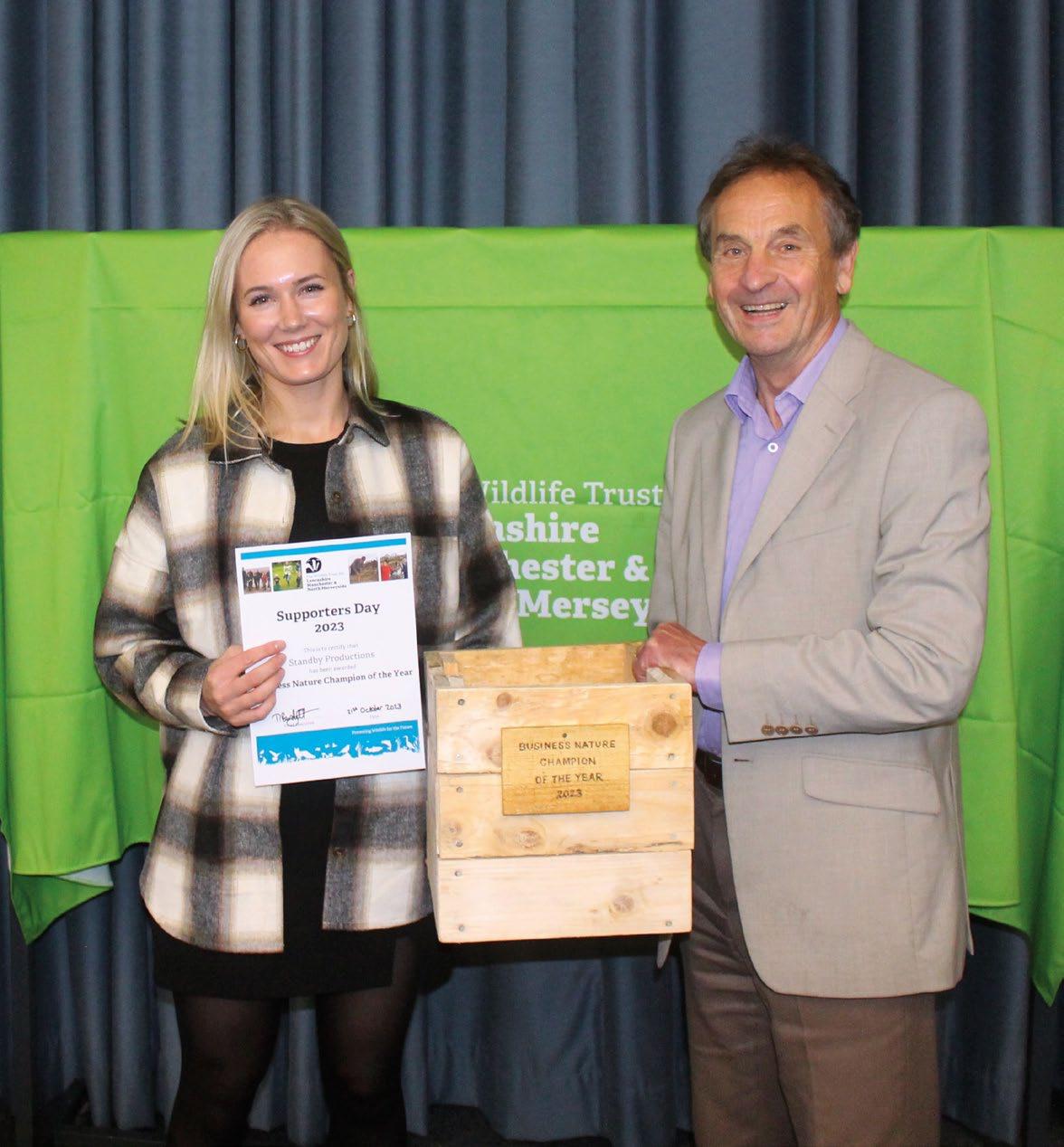
Volunteer Group of the Year
- The Hive Mud Pack
This group meet every Tuesday to look after and maintain The Hive in Moss Bank Park in Bolton. They always get stuck in and work hard no matter what the task is. They are creative, coming up with new ideas to engage our visitors, and are extremely passionate about making The Hive a huge community asset.
Conservation Achievement of the Year
- Louise Bentley, Bolton and Bury Swifts
In 2016, Louise Bentley decided that she wanted to do something to help swifts in her area, so she started the Facebook page Bolton and Bury Swifts. After lots of hard work and awareness raising, she now has a conservation group which is working hard to reverse the decline of urban birds, especially swifts and house martins. She is an inspiration to us all and is making a real difference to one of our most beloved species.
Learning Through Nature Award
- Weeton Primary School
This school has done a lot to improve their outdoor area for both wildlife and the benefit of its pupils. This includes digging a pond, which has already been colonised by frogs, and creating a bird hide with ID guides and information to engage the children in learning about different species of birds. They also leave lots of areas around the site to grow wild and create fantastic habitat for wildlife. We hope this inspires a lifelong love of nature in all of their wonderful pupils. This award was presented on school grounds by our former president, Chris Davies.
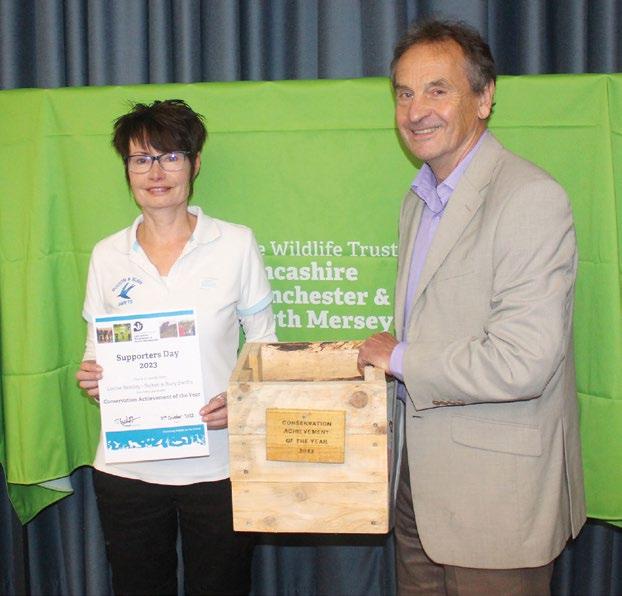
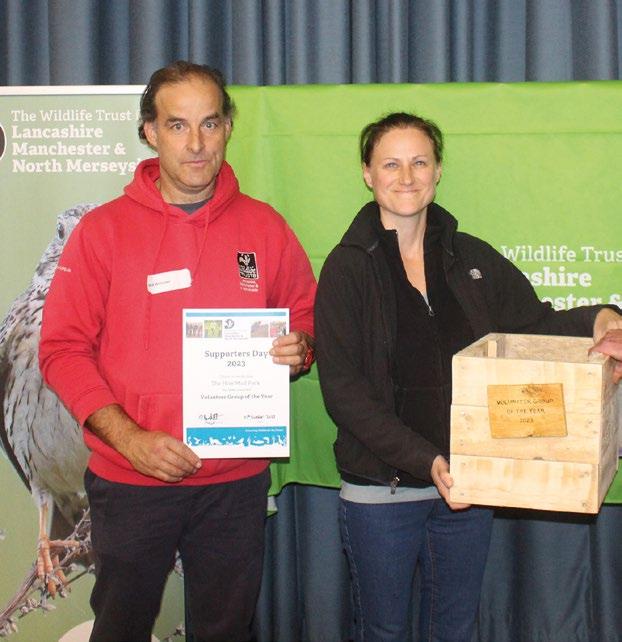
Business Nature Champion of the Year
- Standby Productions
Standby Productions are amazing supporters of our Trust, donating one per cent of their turnover to our peatlands project. They are also involved with lots of other projects across the Trust, not to mention creating fantastic videos for us.
Alongside this, they are working hard to cut their carbon footprint and are active in trying to help other companies make a difference for our environment. They really show how business can be a force for good. The award was collected by Ellen Bounds, Producer at Standby.
"Our annual Action for Nature Awards, which acknowledge and celebrate the inspiring stories of people doing amazing things to aid nature’s recovery."
www.lancswt.org.uk 26 Action for Nature
Conservation Achievement of the YearLouise Bentley, Bolton and Bury Swifts
Volunteer Group of the Year - The Hive Mudpack
Business Nature Champions of the Year - Standby Productions
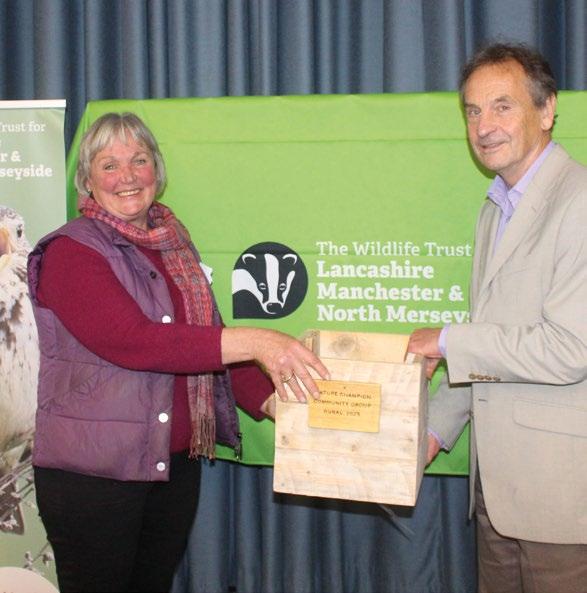



Nature Champions Community Group
( Rural ) – Hermitage Field Community Meadow
This group tirelessly engages the local community in the Crook of Lune to help restoration on a previously overgrazed site. They organise events, walks, training, and seed collecting to grow plug plants.
They are all volunteers and have planted over 11,000 plants so far. Collecting the award was Erica Sarney, Head of Trustees for Hermitage Field Community Meadow
Nature Champions Community Group ( Urban) - Friends of Tawd Valley Group
Friends of Tawd Valley is a community group run by volunteers who are passionate about the nature and wildlife they have on their doorstep. The aim of the group is to promote and improve the usage of the natural asset of Tawd Valley to support the health and well-being of the community.
Climate and Nature Champion of the Year
- Josh Styles
Josh is a brilliant champion for both nature and climate. He is an advocate for Lancashire Wildlife Trust, especially the species reintroduction work on our peatlands. Josh has found many new species never recorded before on our sites.
He is an emotive speaker and has gained a huge following in his campaigns, featuring on national TV and locally - we are sure he is a future Springwatch presenter!
If you would like to nominate someone for our 2024 awards, keep an eye out on our social media channels and in our email newsletters from early autumn.
We need YOU !
We are looking for two enthusiastic volunteers who are passionate about nature’s recovery to join our Board of Trustees.
Our Trustees are the governing body of the Trust and play key roles in all aspects of our work and the strategic direction that we need to take in times of financial and environmental uncertainty.
Each one has a particular skillset and is able to offer support and invaluable advice to our Wildlife Trust.
Being a trustee is a rewarding experience. You would be joining a welcoming group and you will add to your own skills and experience, particularly in strategy and policies. You will need to be a champion for wildlife however please don't feel that you need to be a wildlife expert to apply.
We are currently looking for trustees with experience in fundraising and community engagement.
Check out lancswt.org.uk/jobs for more info.
Closing date 9am Monday 22 April, interviews will be held 25 April - 3 May.
27 @Lancashirewildlifetrust @lancswildlife
Nature Champion Community Group (Rural) - Hermitage Field Community Meadow
Nature Champions Community Group (Urban) - The Friends of Tawd Valley
Climate and Nature Champion of the Year - Josh Styles
# VoteWildlife whatever your political colour
The next General Election will be the most important vote we make for nature in our lifetime, says Alan Wright

We only have six years left to meet the Government’s own 2030 deadline to halt the decline of nature and protect at least 30 per cent of land and sea for nature. We simply must have a Government brave enough to kickstart the reversal of the biodiversity crisis threatening wildlife across the world.
Over the past 100 years we have seen local extinctions of insects across Lancashire – but we know we can make a difference. Our work has already helped to reinstate the Manchester argus butterfly to Greater Manchester’s peatlands.
In a recent Greenpeace poll of 20,000 people: “more than two thirds stated that climate and environment policies are important and will influence how they vote in the next election.”
The environment has been sadly missing from the political agendas in the elections and referendums going back 10 years, but it affects us all.
Environmental promises, including the ban on peat, the end to the badger cull and support for the reintroduction of beavers, have been held up or stopped by the present Government.
The Opposition has just gone back on its £28bn green spending pledge. What hope is there for wildlife, if politicians ignore the concerns of the people? We need to take action NOW to protect our planet and all its inhabitants. All its inhabitants.
Elliot Chapman-Jones, Head of Public Affairs at The Wildlife Trusts says: “The Office for Environmental Protection’s latest assessment warned that the UK Government was failing in their targets to restore nature.
“Nature’s buzz and song is rapidly disappearing from our lives. The recent State of Nature report is a wake-up call to Government to halt business as usual and urgently get a proper plan in place to restore nature. We’re running out of time.” Here at your Wildlife Trust, we believe that together we can make a difference by getting behind our campaign to #VoteWildlife. We want every voter to demand that all of our parliamentary and local council candidates put pressure on their leaders to get nature to the top of the political agenda.
We understand that many people have problems of their own, some people are struggling to feed their own families. Yet these same people will recycle, feed the birds in their garden, visit the countryside, local parks and nature reserves and get the bus instead of using their car. They take actions for nature every single day.
www.lancswt.org.uk 28 Vote Wildlife
Could the next Government end badger culling? By
Darin Smith
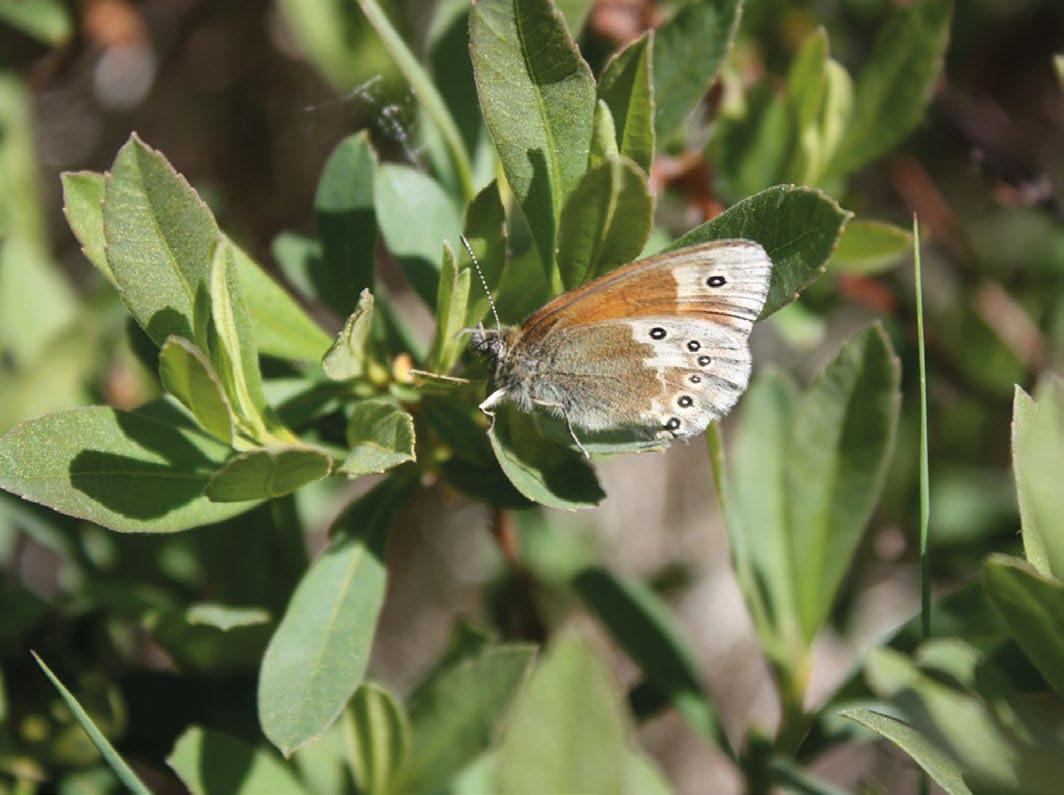
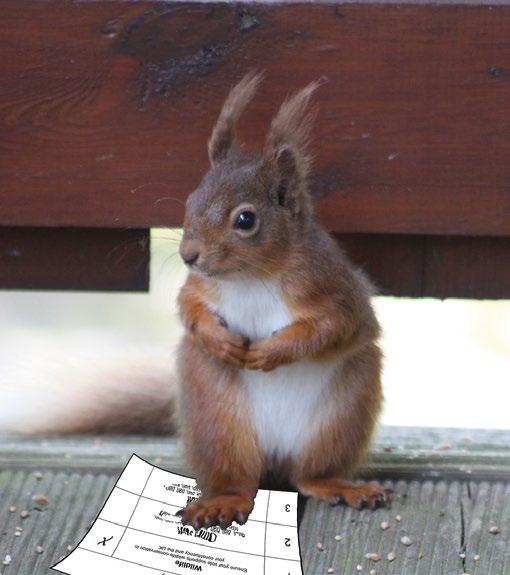

We all have an opportunity to speak to politicians to tell them that we want better for people and for wildlife. We have five asks for our decision makers.
1. Bring back our lost wildlife
2. End river pollution
3. Fund wildlife-friendly farming
4. Green our communities
5. Tackle the climate emergency
More than a million species are at risk of extinction across the world and many of our beloved local favourites are vanishing rapidly.
We must act now, or our children and grandchildren will never see a hedgehog in the wild, listen to the cascading song of the skylark on the West Pennine Moors, or marvel at the acrobatic skills of a red squirrel in Merseyside.
Every river in the north west is polluted, a dumping ground for waste. We need strong safeguards to ensure water courses are clean and safe for both wildlife and people. The next government must support the hard-working farmers who provide our food, but who also understand the importance of wildlife on and around their land.
Decision makers must realise the importance of nature and open spaces for health and wellbeing. Using nature as a prescription for mental health issues will help our precious NHS to save millions of pounds.
We have already started this work with our Nature and Wellbeing programme and The Bay, working with numerous people experiencing mental and physical health difficulties and helping them on the road to recovery.
Results from Wildlife Trust surveys demonstrate that, irrespective of voting choice, nature matters to voters across the electorate.
Voters on the left and right feel similarly connected to nature.
43 per cent of those polled who voted in the 2019 General Election currently support environmental charities in some way.
29 per cent of environmental charity supporters voted Labour in 2019 and 26 per cent voted Conservative.
61 per cent of The Wildlife Trusts’ supporters will vote based on environmental policies offered by candidates.
"Nature recovery is fundamental to tackling climate change and improving people’s lives – history will not be kind to politicians that ignore this truth."
The Wildlife Trusts Chief Executive, Craig Bennett, said: “This next parliament will be the most important in my lifetime for nature and climate action. The clock is ticking towards the 2030 deadline by which point the UK Government has committed to protect at least 30 per cent of land and sea for nature and to halve the risks posed by pesticides.
“Nature's recovery is fundamental to tackling climate change and improving people’s lives – history will not be kind to politicians that ignore this truth.”
The more we ask questions of our politicians and prospective parliamentary candidates, the louder the voice for wildlife will be. Whatever your political leanings, please consider making your vote a vote for wildlife.
29
@Lancashirewildlifetrust @lancswildlife
We are losing our wonderful skylarks, by Dave Steel
A red squirrel votes for wildlife Manchester argus butterfly, by Alan Wright
Our meadows are springing into life
Wildflower meadows have been slumbering the winter away, but spring sees them bursting back into life. Jenny Bennion takes a look.
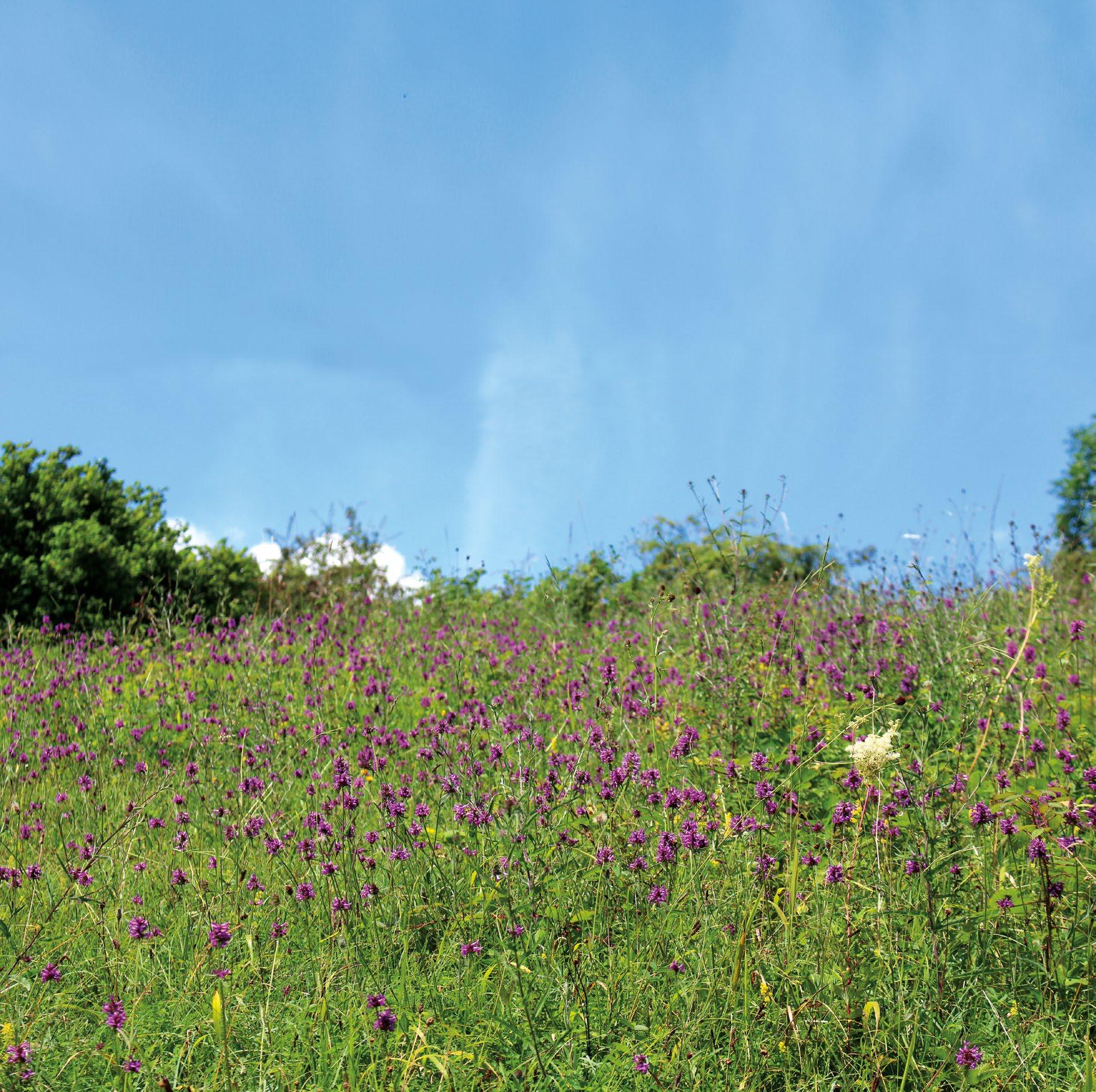
For many of us, thinking of wildflower meadows brings to mind lazy, hazy summer days in fields full of colourful flowers and the soothing hum of pollinators going about their business of quietly helping to save the world.
However, most of our wildflower meadows actually get going a lot earlier than that.
Spring is the time that most of our meadows rise up and shake off their winter torpor, with early floral species providing pops of colour to entice newly emerging bees, butterflies and other invertebrates.
Nationally it is estimated that we have lost 97 per cent of our wildflower meadows since the 1930s – and the picture is no better in our region. But all is not lost, as across our nature reserves we are working hard to care for and restore meadows wherever we can.
Supporting our
‘Step up for Wildlife’ appeal will help us continue to care for our beautiful, and vital, wildflower meadows.
Wherever you live, you are likely to be closer to a wildflower meadow that we care for than you may think. From Heysham nature reserve in the north, Brockholes and Freeman’s Pasture in the centre of our region, to Salthill Quarry and Longworth Clough in the east, right down to the meadows dotted around Wigan Flashes in the south, there’s a meadow out there for us all to enjoy.
If you get the chance to peer amongst the grasses in a meadow at this time of year, look out for:
www.lancswt.org.uk 30 Nature
The wildflower meadow at Salthill Quarry, by Alan Wright

Cowslip
A stalwart of many traditional hay meadows and woodlands, cowslips poke their long slender necks from the ground as soon as the weather starts to warm, and the daylight lengthens. Adorned with nodding heads of lemon yellow flowers that are either swaying from the breeze, or from the weight of the pollinators that are feasting on their nectar. Traditionally used in May Day garlands, cowslips have gone by many other names in the past including key of heaven, paigles, bunch of keys and herb Peter.
Pignut
Appearing in May and June, elongated stems are topped with umbels of ethereal white flowers. A member of the carrot family, pignut has a long brown tuber underground which is edible and tastes like hazelnuts. Once a common pastime, pignut hunting has largely been forgotten – and whilst a tiny taste may be a treat, please remember that uprooting wildflowers is an offence and only ever eat something if you are absolutely certain of its identification.
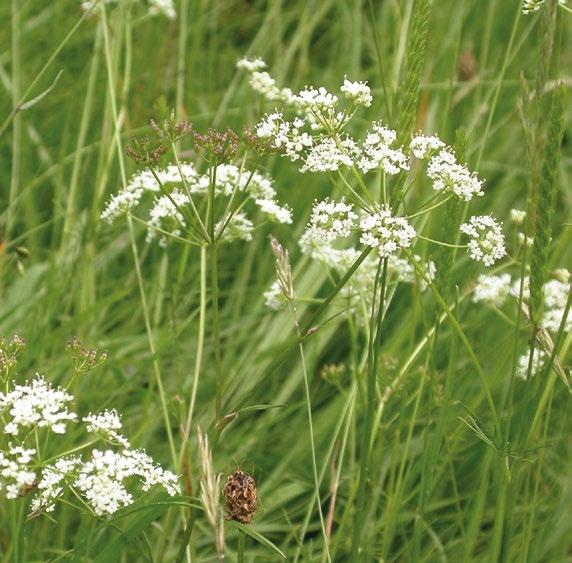
Ragged robin
Providing splodges of pink in the wetter areas of meadows, ragged robin blooms from May right through to August. The deeply divided petals provide the inspiration for the ‘ragged’ part of its name, whereas plants with ‘robin’ in their name were long associated with evil. It was considered unlucky to bring ragged robin flowers into the home and if a gentlemen carried a flower in his pocket and survived it was said he would be lucky in love.
Lesser celandine
One of our earliest spring flowers, you won’t find lesser celandine dancing through the centre of a meadow but look out for it around hedgerow edges and in areas of woodland. A sunny day will see the bright yellow flowers open up, shining like a carpet of tiny beacons heralding better days to come.
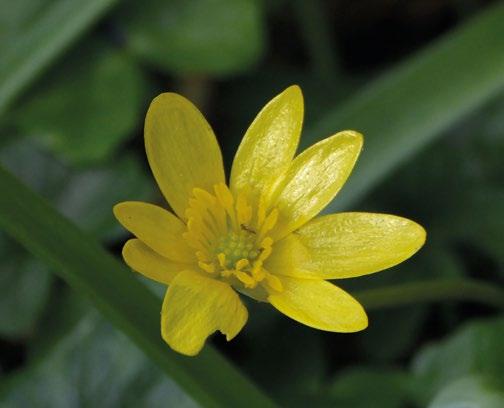
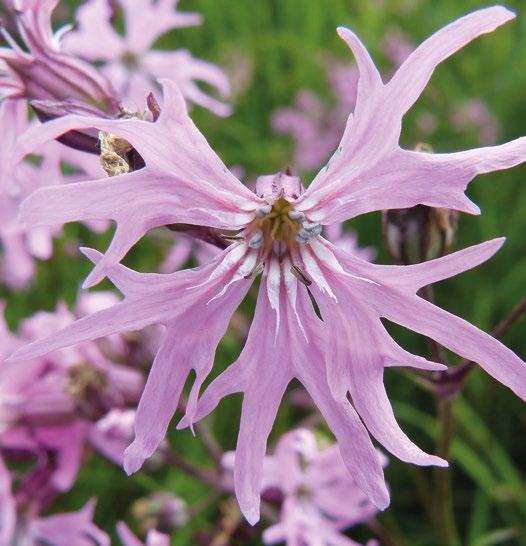
Cuckoo flower
A sure sign that spring has arrived, cuckoo flower is so named as its blooms coincide with the first calls of the returning cuckoo, around April. Also known as lady’s smock, cuckoo flower has gorgeous clusters of delicate pink or mauve four-petalled flowers which rise from a slim stem protruding from a rosette of leaves. The orange-tip butterfly lays its eggs on the calyx or stem of the cuckoo flower – which is just another reason to love them.

"Nationally it is estimated that we have lost 97 per cent of our wildflower meadows since the 1930s – and the picture is no better in our region."
31
@Lancashirewildlifetrust @lancswildlife
Cowslip, by Liz Webley
Lesser celandine, by Helen Earnshaw
Pignut, by Philip Precey
Ragged robin, by Terry Jolly
Orange tip butterfly on cuckoo flower, by Alan Price
"What could it be hiding?
How could we not look after what could be a natural wonder just a few miles off our coast?"
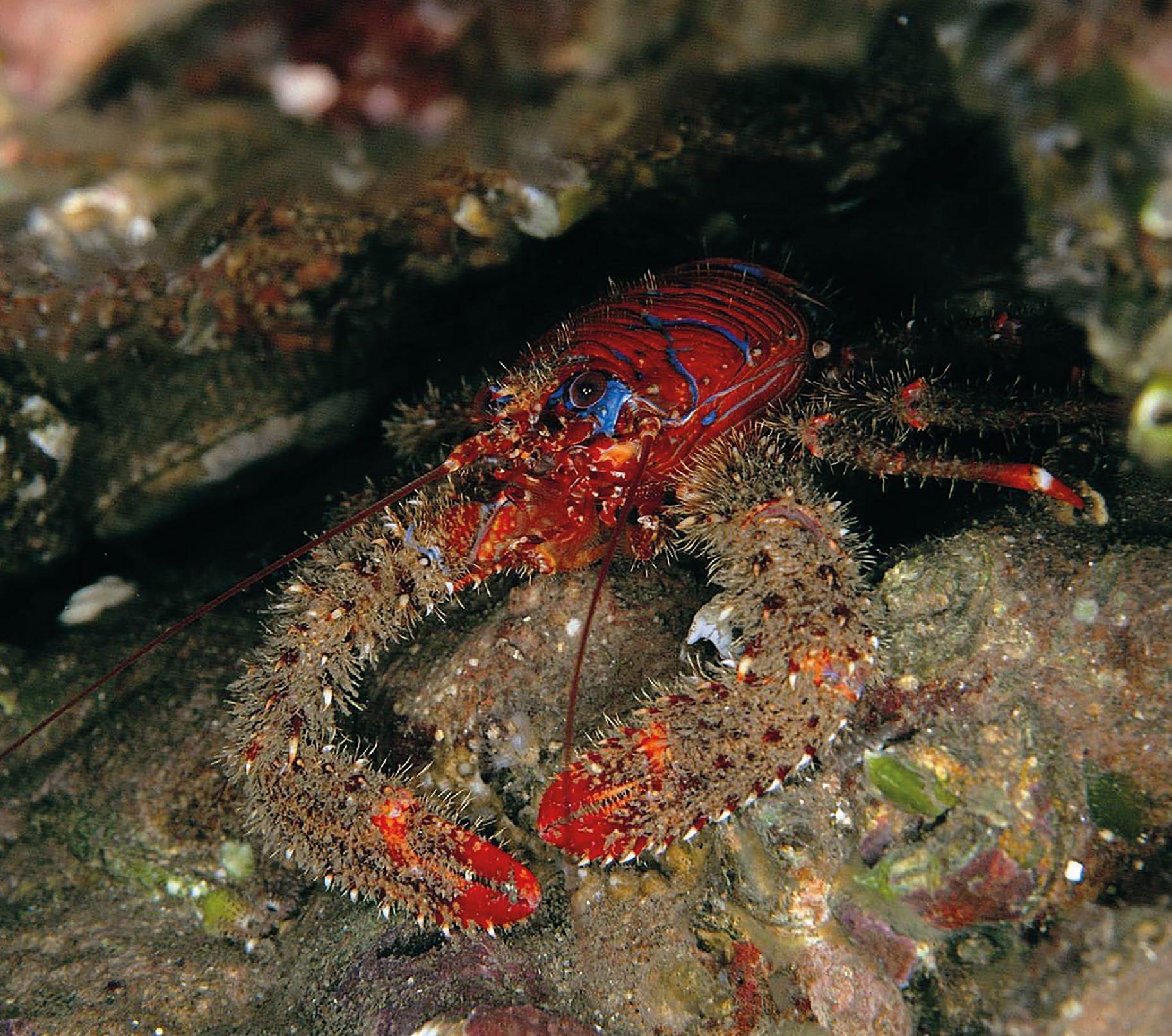
Check out
NaturalamazingEngland’s video search Lune Deepon YouTube
Into the depths of Lune Deep
A spectacular natural haven for wildlife is out of sight and out of mind for most of us. Alan Wright wants to dive into Lune Deep to discover its secrets.
In my first five years at the Trust, there was a poster on the wall with a dramatic image of Lune Deep, and I have been fascinated by it ever since. What is this phenomenon?
An underwater Grand Canyon just off the coast of Lancashire?
Many of us have looked towards Lune Deep as we stand at Rossall Point in Fleetwood staring out to the Irish Sea, but we had no idea about this spectacular corridor and entrance into Morecambe Bay.
It is a 20 kilometre (12.5 mile) long trench, dropping 70 metres in places, with steep slopes proving it was formed by huge glaciers carving deep into the floor 20,000 years ago.
www.lancswt.org.uk 32
The Irish Sea
Spiny Squat Lobster, by Paul Naylor
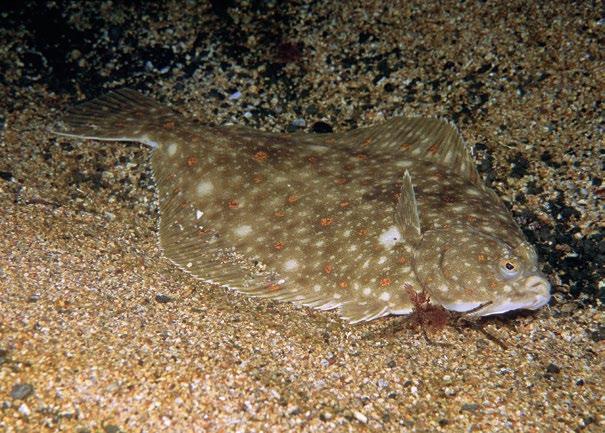
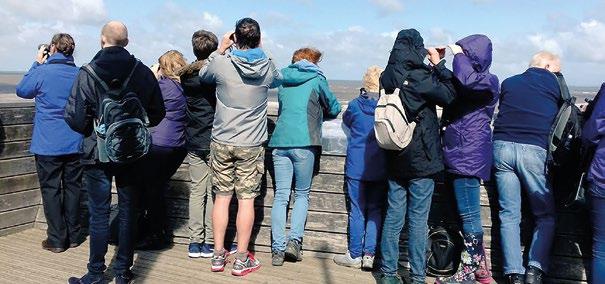
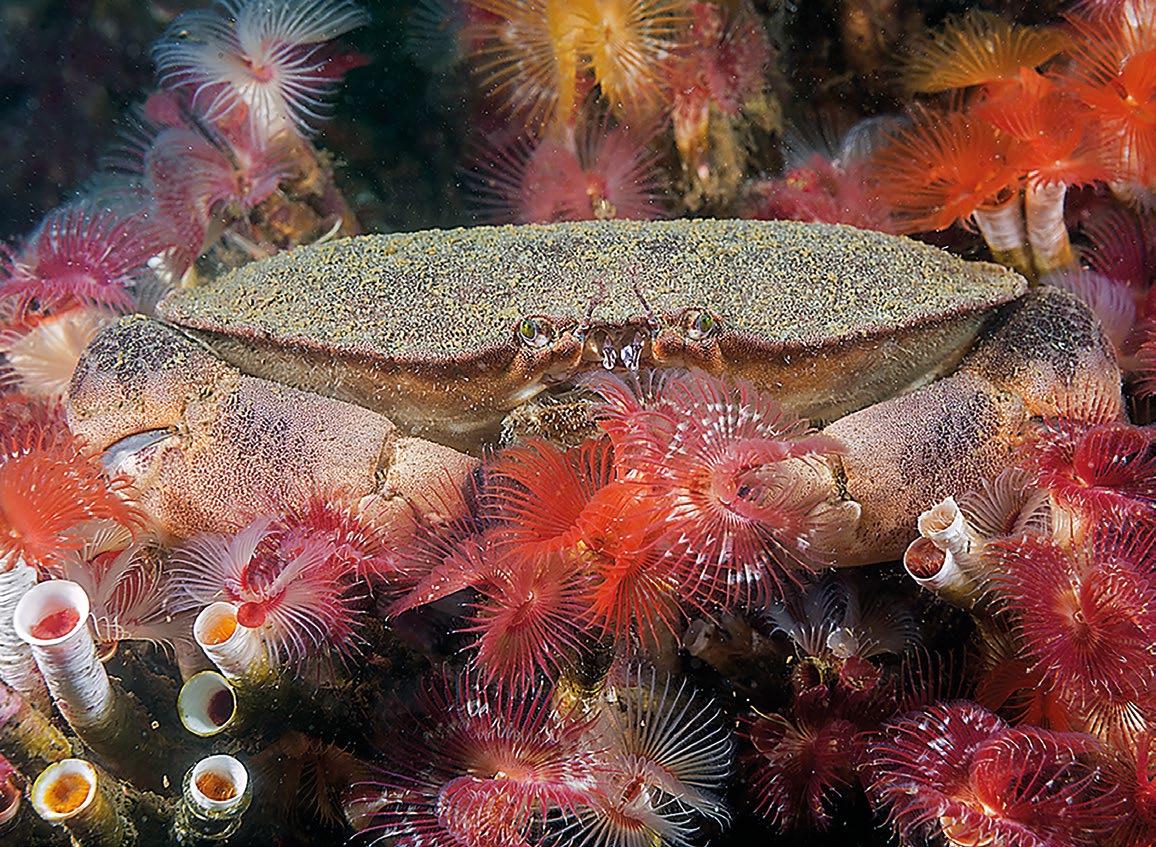
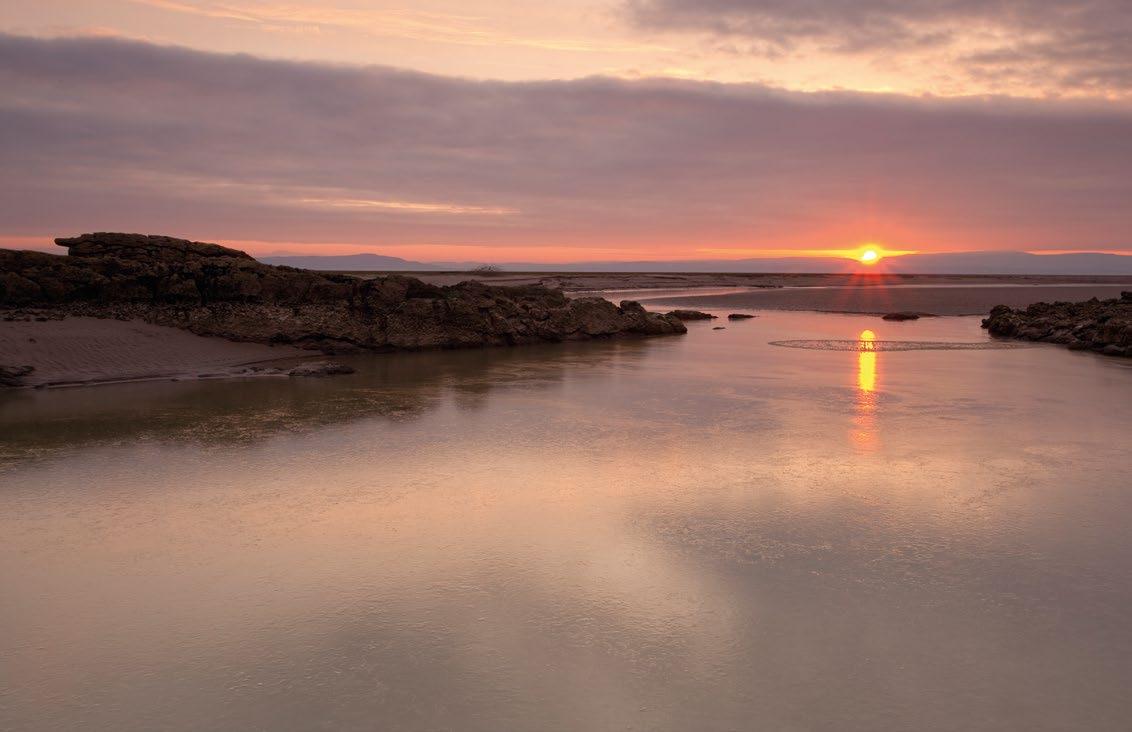
Lune Deep has been described as our Grand Canyon. It’s nowhere near as big but it is still contains cliffs that wouldn’t look out of place in that iconic geological giant in Arizona.
Despite the image of the Irish Sea being a dirty and polluted sea, it is a home and feeding place to so much wildlife. If we could get video footage of Lune Deep it would add to the argument that this area of sea is massively important and needs our protection.
Lune Deep was surveyed around 10 years ago and there is a fascinating video from Natural England which was a reconstruction of what this channel actually looks like.
Just four kilometres off the Lancashire Coast, this is a trench with reefs, crevices and mud flats at the bottom, home to lobsters, squat lobsters, brittle stars, peacock worms and fan worms. Plaice and other flatfish luxuriate in the mud on the floor.
It is part of a larger area, with the Shell Flat sandbank to the east and south and Lune Deep in the north. Shell Flat’s elevation only adds to the drama of Lune Deep.
Although this area is ‘protected’ as a Special Conservation Area, in reality there is very little protection and there is so little monitoring that its condition status is unknown.
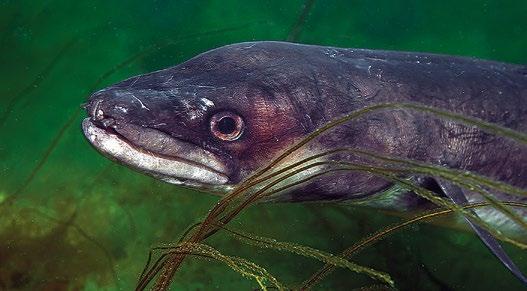
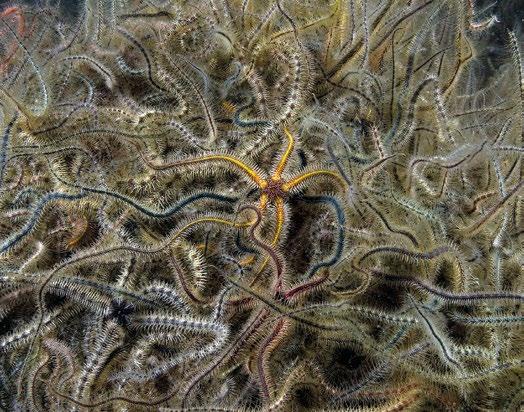
We know that Lune Deep has been trawled for plaice and herring but surely protections should be in place until we know the true nature of this trench. We have an idea of the habitats and wildlife down there, but what could it be hiding? How could we not look after what could be a natural wonder just a few miles off our coast?
Imagine the excitement if we could get some video cameras down there? It will take time and money, and a lot of experts involved in the discussion.
For the time being, let us protect Lune Deep and other rare habitats in the Irish Sea. Just because we cannot see them, it doesn’t mean they are not important.
33 @Lancashirewildlifetrust @lancswildlife
Morecambe Bay, by Peter Cairns 2020VISION
Sea watch at Rossall Point, by Emily Parr
Conger eel, by Mark Thomas marknthomasimages.co.uk
Edible crabs and fanworms inhabit Lune Deep, by marknthomasimages.co.uk
Plaice, by Paul Naylor
Brittlestar bed, by Paul Naylor
Do not disturb...
Kirsty Tyler looks at the effect we have on coastal wildlife, and how to lessen our impact.

With spring in full throttle, your thoughts might be turning towards summer and trips to the seaside. Sticks of rock, ice cream and sandcastles are likely to spring to mind when you think of our coastline, but what about our wildlife?
Coastal birds such as oystercatchers, little terns and little ringed plovers are just some of the birds that also have a summer holiday to the British coastline in spring and summer, and much like us they’ll have the kids in tow.
These birds are all ground nesting, and this makes them exceptionally sensitive to disturbance, from walkers, people playing, dog walking and lots more. Their eggs and the tiny chicks are well camouflaged within rocky shorelines and sand dunes, which makes them difficult to spot. It’s not just summer when we should be careful – winter is a tough time for all animals, and many northern species seek out the slightly warmer climate of Britain (compared to the Arctic Circle anyway) to eat and rest up.
www.lancswt.org.uk 34 Wildlife
Grey seal pup, by Tom Marshall
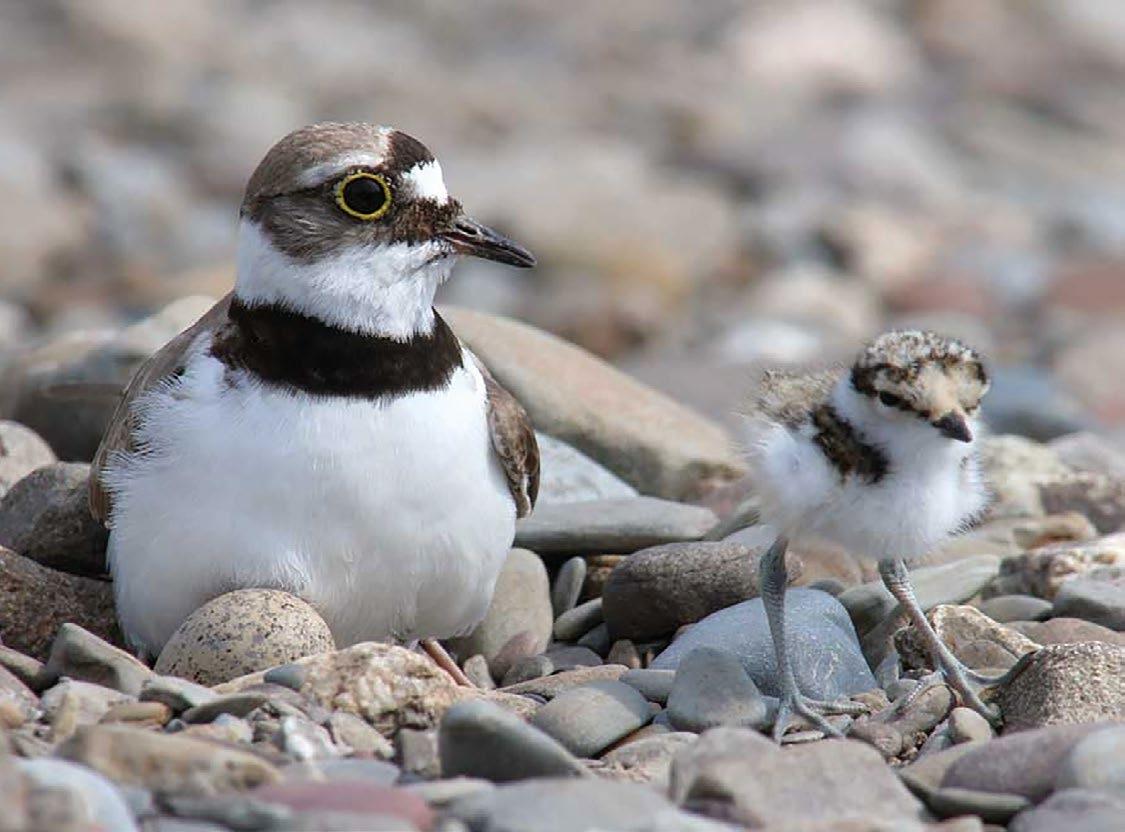
Imagine what happens when the flock is disturbed and has to expend the little energy they have to take flight? This extra energy use can make all the difference to survival.
And it’s not just birds – in the north west we’re lucky enough to have breeding grey seal populations, however there were multiple seal fatalities last year caused by boats, other watercrafts and people getting too close. We have lost seal pups when their frightened mothers have abandoned them.
Last year, the Marine and Coastal Wildlife Code was released, which accompanies the Countryside Code to give guidance on how to minimise disturbance for our coastal wildlife.

"Imagine what happens when the flock is disturbed and has to expend the little energy they have to take flight? This extra energy use can make all the difference to survival."
These are our top three takeaways from the guide:
1. Give wildlife plenty of space. Try to stay at least 100 metres (330 feet) away, if not, you should leave as much space as you can. You could use binoculars, or a camera zoom lens to watch wildlife from a safe distance.
2. Dogs could disturb and harm wildlife at the coast if they are not kept under effective control, so make sure they are in sight, and ideally on a lead.
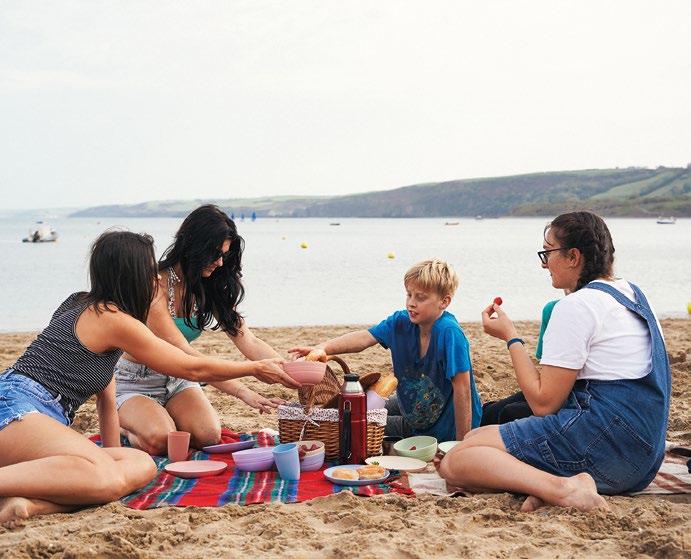
3. When you go into the sea, take care not to disturb wildlife or damage habitats. You can do this by entering the sea on open stretches of beach, between lifeguard flags or by using designated slipways.
If you’ve got a small craft, such as a kayak, paddleboard or surfboard, carrying it to the sea rather than dragging it will prevent damage to sensitive habitats.
It’s important for us to spend time enjoying our coastline and really to feel that deep connection to our local landscape. So, go and enjoy the beach this summer - but remember, we’re not the only ones appreciating the seaside.
Take a look at the rest of the code by searching for ‘Marine and Coastal Wildlife Code’ on your web browser.
35
@Lancashirewildlifetrust @lancswildlife
Little ringed plover, by Derek Moore
Paddleboarding is great fun, but not if you are disturbing wildlife, by Leia Morrison
We can all enjoy our coastline safely, by Leia Morrison
Bowled over by nature
A cricket club in Bolton has transformed an unloved patch of land into a vibrant community garden, says Annabelle Brittle .
What could you do to make your community greener? This is the question posed by the Green Spaces Fund; a £2.6 million initiative launched by the Mayor of Greater Manchester to help community-led projects increase the amount of accessible green space across the city-region.
A total of 86 groups have received funding to date, including the Deane and Derby Cricket Club in Bolton. They were granted £15,000 to convert an unused patch of land behind their clubhouse into an inclusive garden that would benefit the local community by providing growing space and biodiverse wildlife areas, as well as an area to host workshops, regular events and green volunteering opportunities.
Community fun days at the garden have encouraged local people from all backgrounds to get involved with gardening and learn more about growing their own fruit and veg.
One attendee at a recent session said: “I had an amazing time today planting with members of the community including young children who did a marvellous job!”. Another said the event was “very therapeutic – I felt connected with nature and got a few gardening tips.”
It’s fantastic to see the garden fulfilling its aim of becoming a place where people can come together to learn, grow and connect with one another and themselves.
"I had an amazing time today planting with members of the community including young children who did a marvellous job!"
Since work began in early 2023, the impact of the project has been fantastic. Starting with community dig days to clear rubbish and overgrown plants from the site, work quickly began on installing raised beds full of sensory plants, creating a wildflower meadow, and planting a variety of fruit and native trees.
Ismail Kala, the club Secretary, has certainly noticed a change in the community: "New people are visiting to use the club facilities and coming to see how the garden is progressing. So far we’ve introduced over 150 trees, hedges and plants to the garden with the help of volunteers; it’s great to see people coming together to help.”
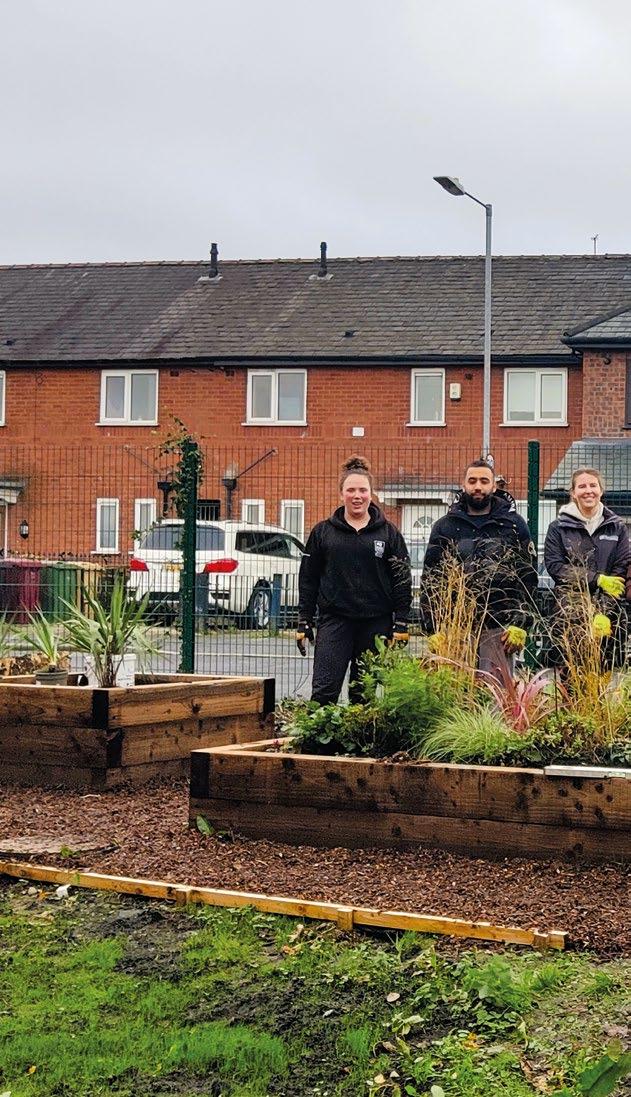
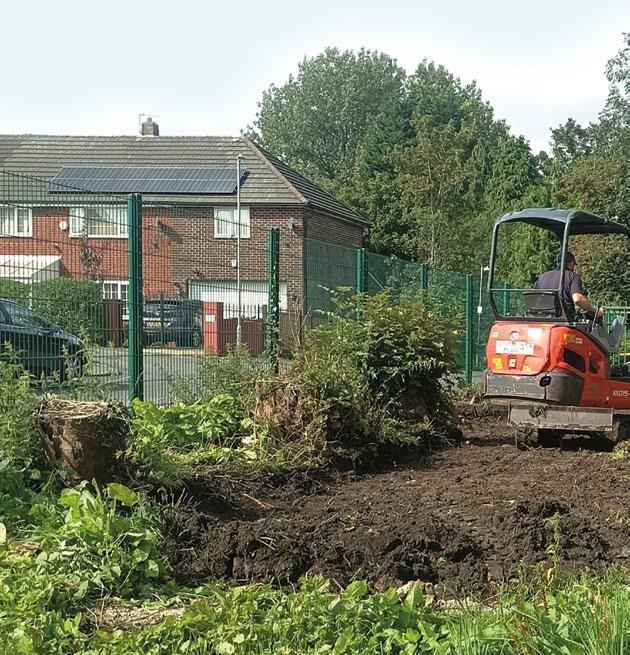
The garden also hosts weekly community payback sessions, where people on probation help out on site by litter picking, painting and performing general maintenance tasks. In the future, they’re hoping to offer social prescribing sessions and create a café connected to the garden.
As well as becoming a space for encouraging community spirit, it’s hoped that the garden will attract lots of vital wildlife to the area. Ismail said there’s been a “noticeable increase in the number of birds and insects” visiting the space which is great to hear.
www.lancswt.org.uk 36 Action for Nature
An eager group of volunteers at the community garden, by Emma Smith

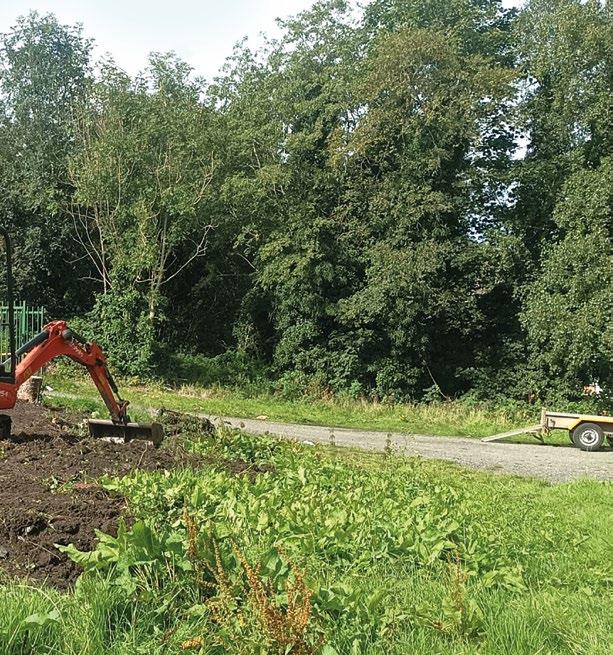
Check out other Green Spaces Funded projects at gmenvfund.orgwhy not volunteer or get involved with their events?
Members of staff from your Wildlife Trust visited the garden last year and delivered wellattended community workshops on creating bird feeders and wellbeing walks focussed on spotting wildlife.
The latest improvement to the site has been the addition of a pond, which is sure to bring even more biodiversity to the garden.




Helping people come together to improve their local environment, along with the wellbeing of their local communities, is a key objective of the Green Spaces Fund, so it’s brilliant to see this community garden project going from strength to strength. The club are always eager for new volunteers at the garden, so contact deaneandderbycc@gmail.com if you’d like to get involved.
So, what could you do to make your community greener?
Whether it’s making small everyday improvements or taking on large-scale projects, we can all do our bit to nurture the growth of green spaces and communities in Greater Manchester and beyond.
37 @Lancashirewildlifetrust @lancswildlife
Making way for raised beds and a walkway through the garden, by Emma Smith
Working hard to improve the site, by Emma Smith
A raised bed bringing some beautiful bright colours to the area, by Ismail Kala Clearing the space was the first priority for the group, by Ismail Kala

OTTER ON KELP BED © CHRIS GOMERSALL/2020VISION www.lancswt.org.uk 38 State of Nature

in the UK
Katherine Hawkins, nature policy manager at The Wildlife Trusts, gives an update on the State of Nature report and what it means.
The State of Nature report is perhaps the most comprehensive account of the status of wildlife in the UK. It is produced by a partnership led by the RSPB, consisting of scientists, data analysts, nature conservation experts and communicators from across more than 60 organisations –including The Wildlife Trusts. The aim is to use the best available data from the last 50 years to better understand and share information on the status and trends of habitats and species across the UK (and the Crown Dependencies and Overseas Territories). As well as presenting data and stats, the report also tries to explain the reasons behind the numbers. The findings are widely used to demonstrate the need for greater action for wildlife and to help focus efforts.
The first State of Nature report was published in 2013 and then again in 2016 and 2019. Unfortunately, the latest report – launched in September 2023 – shows that wildlife across the UK is continuing to decline.
The UK continues to be one one of the most nature-depleted countries in the world.
But it isn’t all bad news. We know the reasons for the declines. We know that conservation actions work. We know what needs to be done.
39 @Lancashirewildlifetrust @lancswildlife
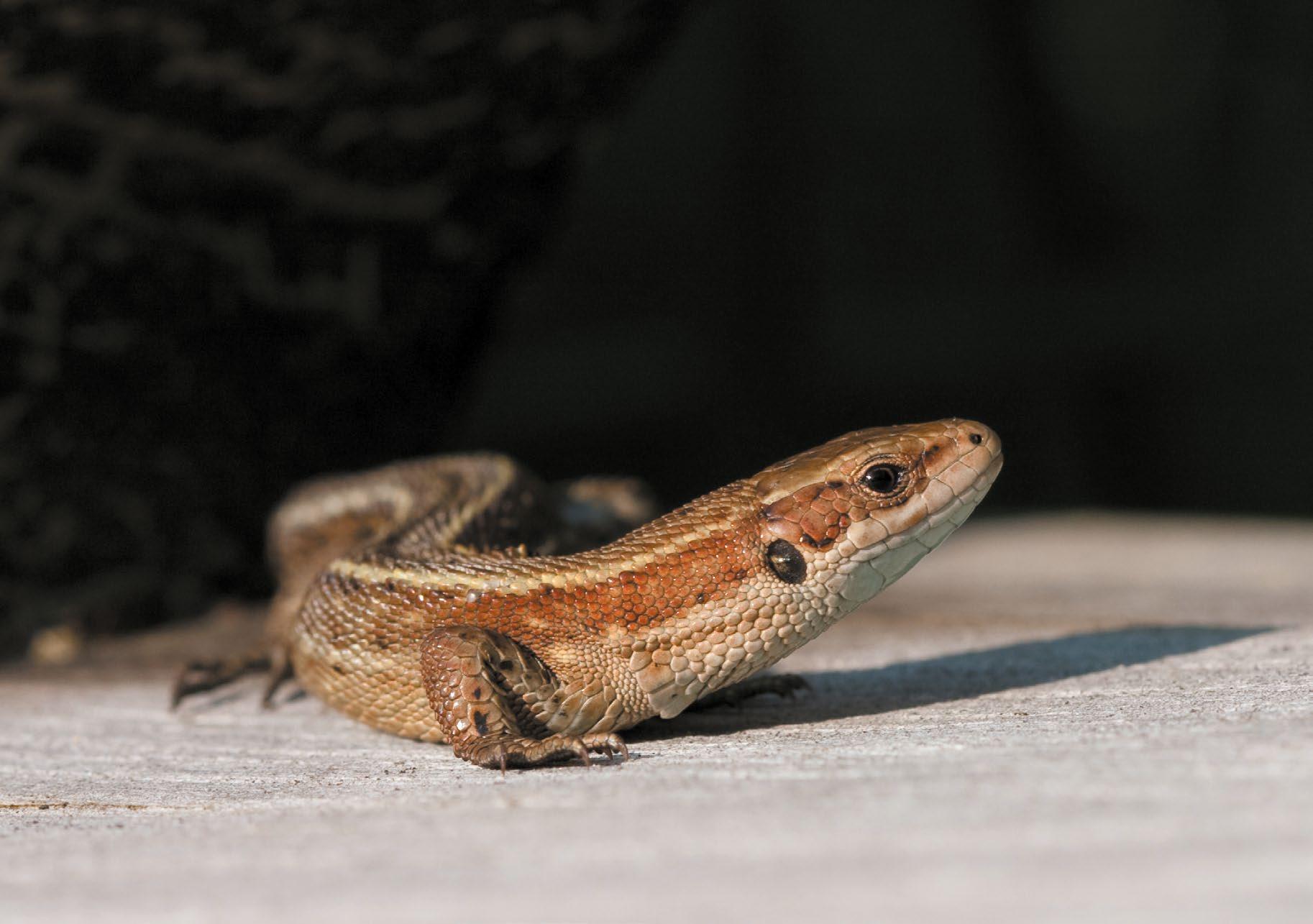

www.lancswt.org.uk 40
Katherine Hawkins relishes being outside – hiking, camping, exploring. It was seeing and understanding the world around her that led to her working to secure nature’s recovery for us all.
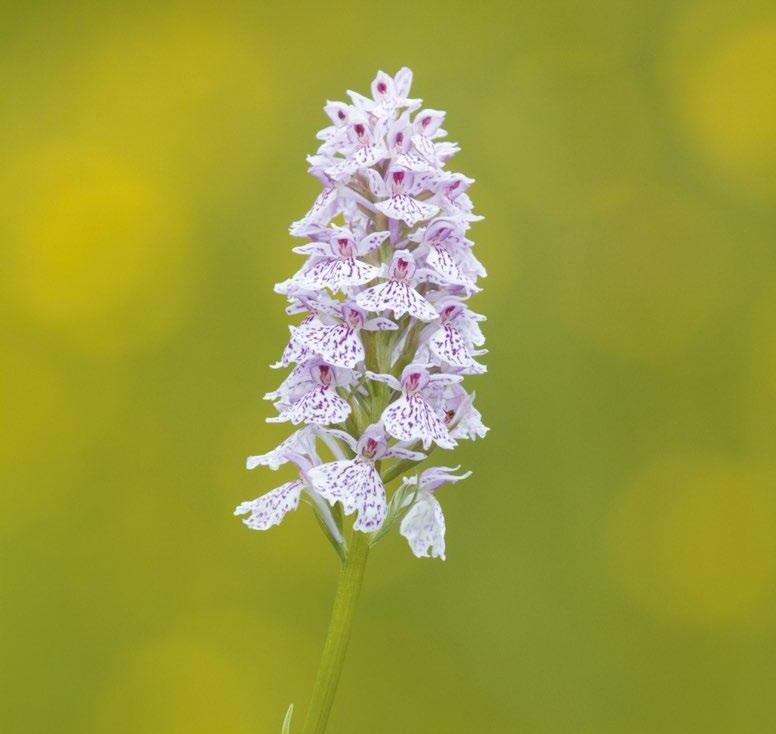

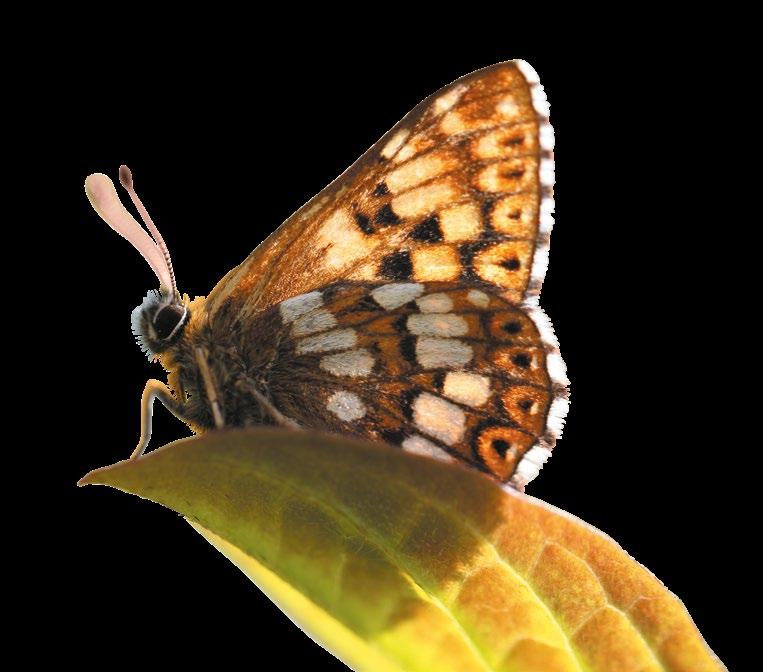
41 @Lancashirewildlifetrust @lancswildlife

A picture perfect spring
It’s spring and our photo competition entrants have been out and about across Lancashire, Manchester and North Merseyside to capture our local wildlife in all its glory. Alice Wood gives us a round-up of our recent winners.
www.lancswt.org.uk 42
competition
Photo
Fungi tree, by Allison Lyon
The photography competition continues to be sponsored by in focus, the binoculars specialist, who very kindly offer a £100 voucher as the prize each month.
Based in the Lookout hide at Brockholes Nature Reserve, in focus have a wide selection of binoculars and scopes to help you keep a closer eye on the incredible wildlife we are blessed with on our reserves.
After a winter of changing weather from rain, strong winds and even snow, we are now in the warmer days of spring and all the wonder that it brings. From blooming buds to new and old arrivals, our nature reserves come alive, ready to be enjoyed by all.
Our photography competition gives you the chance to show us your photography skills and the incredible nature moments you experience when exploring the region. Take a look at some of our incredible winners from the past few months and their stunning snapshots of nature at its finest.

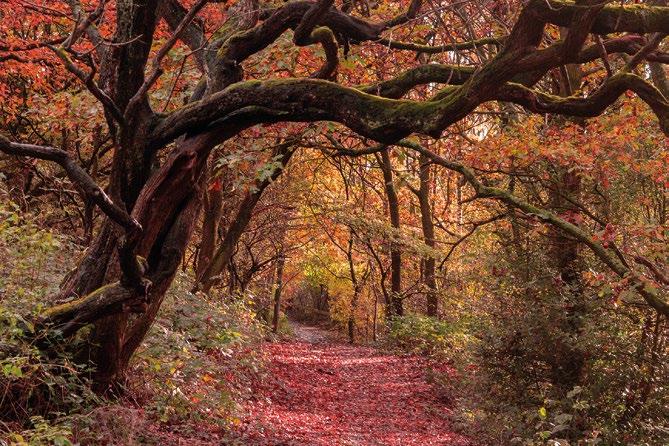
We start our line up with the winner of September’s photography competition, Deborah Shackleton. Under the theme of ‘Local Landscapes’, we were amazed with how she photographed this stunning murmuration in the early morning sky. From the orange glow of the sky and the remarkable murmuration to the illuminated landscape, still and undisturbed in the early hours. A stunning piece of photography and a worthy winner.
October’s competition was all about ‘Fabulous Fungi ’. Allison Lyon was our winner with this incredible photograph titled, ‘Fungi tree’. We loved the way that she captured the sulphur tuft mushrooms as they cascade down the trunk of the tree. One of our judges loved the “perspective and the ’ladder-effect’ of the fungi”. The composition of this image, from the autumnal hues to the clarity of the fungi, is outstanding.
For November’s photography competition we focused on all things that reflect the ‘Shades of Autumn’. Dave Bennion took home first place with his beautiful landscape. Taken in Bamber Bridge, his photograph was beautifully framed and the way that he captured the blanket of autumn leaves hiding the footpath beneath the trees is simply breathtaking.
The winner for December’s ‘Christmas Card Wildlife’ competition was Bob Hurrell. Taken at Lunt Meadows, his stunning goldfinch, perched on the frost covered seedheads, encapsulated the theme perfectly. The depth captured in the different layers of this image are incredible. One of our judges loved “the splash of the red facial markings against the backdrop of the whites, greys and browns - like a natural Christmas decoration”.
As we welcomed in the new year, the spectacular entries for our photo competition continued. January saw some incredible entries under the theme of ‘Mammal Magic’. Our winner, Michaela Moville, managed to photograph this stunning little mouse which completely captivated our judges. We loved the whole composition of this image, with one of our judges adding, “This photo seizes the moment to capture a great pose, with curiosity briefly overcoming fear; both important elements in a small mammal's survival”.
If viewing these incredible images has got you feeling inspired to get out in the natural world and capture some wildlife shots, why not enter our competition? Take a look at this month’s theme and find out how to enter at lancswt.org.uk/photo-comp

 Murmuration, by Deborah Shackleton
Murmuration, by Deborah Shackleton
43 @Lancashirewildlifetrust @lancswildlife
Goldfinch on frost covered seedheads, by Bob Hurrell
Mouse, by Michaela Moville
Autumn in Bamber Bridge, by Dave Bennion
What is Better Business?
Our Partnerships Officer, Megan Kelsall , explores the role organisations can play in protecting the environment and how a change in policy could change the future of business.

What does it mean to be a better business? In my role, I have the pleasure of meeting enthusiastic and environmentally conscious business owners and employees who have either centred their business model around nature and wildlife or, in most cases, genuinely want to make a difference for the future of the planet. They are actively seeking alternatives to their respective industry norms to make their processes more sustainable.
They seek advice from incredible resources like the Better Business network, the B-Corp labs, and conservation charities like ourselves to help them better understand the impact their work is having on the environment. In a world where we are in climate crisis and 72 per cent of the public think businesses have a responsibility to protect the environment, should this be such a radical act?
We are supporting the Better Business Act, a business-led campaign with a mission to change the law to make sure every company in the UK aligns the interests of their shareholders with those of wider society and the environment.
A small change in the law could create a big change in the world. By changing the law that governs how businesses act, it would no longer be a choice to align the long-term interests of people, planet and profit. It would become the norm, which is a huge shift in attitude towards the needs of wildlife, nature and the environment.
Businesses across the UK have proven this as a model for sustainable growth that drives innovation and entrepreneurship.
In order to make this change, we need Britain’s business leaders to call on the government to amend Section 172 of the Companies Act to ensure businesses are legally responsible for benefitting workers, customers, communities and the environment, while delivering profit.
“The government wants to tackle the climate crisis, promote global Britain and level up our country. To do this, we need business working at its best.”
Mary Portas, Founder of the Portas Agency and Campaign Co-Chair
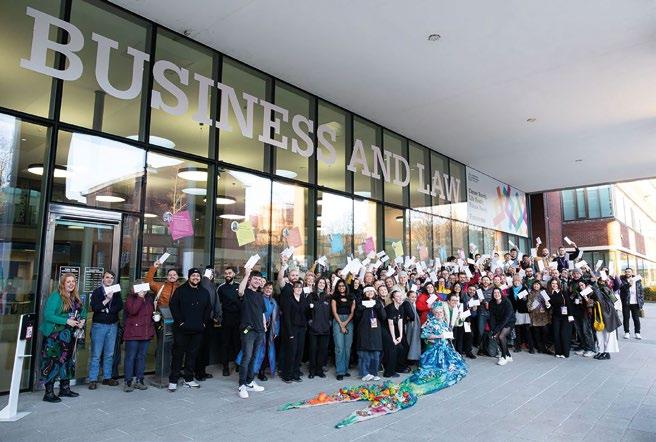
How can you help?
As an individual - share this act and raise awarenesswrite to your MP to show your support for the Better Business Act
As an organisationshow your commitment to people, planet and profit by joining the coalition. You are in good company, over 2,500 businesses are currently advocating for the Better Business Act and have joined the coalition.
www.lancswt.org.uk 44 Our corporate friends
Yarrow reservoir, by John Lamb
Welcome to our new members...
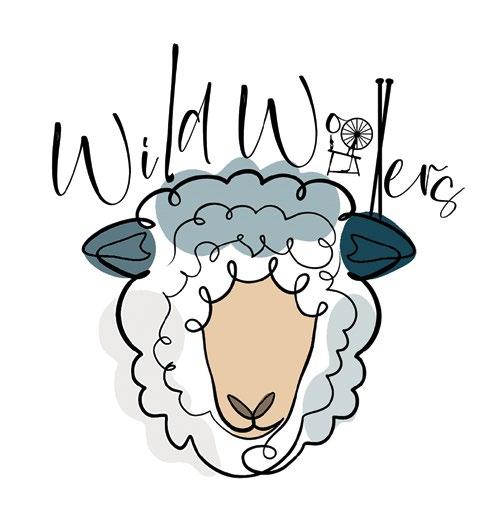
We are delighted to announce our partnership with the Wild Woolers team. The incredible duo, Helen and Beth, are raising awareness of our Freshfield Dune Heath conservation grazing projects with every mitten, sock and ball of wool they sell. We can vouch for their coziness being that they are being lovingly made using our very own Lancashire Wildlife Trust sheep fleeces.
We love celebrating natural materials over human-made fabrics and creating a legacy for our valuable fleeces as a sustainable resource.

Our 1% club is growing! Planet Shine have committed to donating one per cent of their annual profit to The Lancashire Wildlife Trust, along with the offer of their filming services, so we can continue to share all our valuable work as far and wide and with as many people as possible.
Planet Shine's goal is “to use film to light up the world and build a better future for all species” and we can certainly get behind that message.

If that wasn’t exciting enough, we are incredibly lucky to have enlisted the UK’s leading television facility, dock10, into our green network of supporters.
CORPORATE MEMBERS
GOLD
– Beechfields
– Close Brothers
– Eric Wright Group
– Gresham Office Furniture
– Little Green Feet – JBI Ltd
– Mace
– Northstone
– Places for People
– Planet Shine
– Siemens
– Standby Productions
– Volker Stevin
– VP plc
– Victrex
SILVER
– Decordia Ltd
– Dock10
– Fort Vale Engineering Ltd
– Making Energy Greener
– MJ Wilkinson Plant Hire
BRONZE
– Cavendish Nuclear
– Stowe Family Law
– Weinerberger
LOCAL BUSINESS MEMBERS
– Hoofs & Paws
– Moss Wood Caravan Park
– Worthington Sharpe Ltd
Also special thanks to other businesses that have generated income, taken part in Welly Workouts or given in kind materials and help to projects this last quarter: Siemens, Wildlife Travel, Morgan Sindell Construction, Eric Wright Constuction, VercoGlobal, Laing.
A huge thank you to Skipton Building Society - St Annes, Whitecroft Lighting, NSG, and Inflexion who have donated generously to our ‘Step up for Wildlife’ appeal
Based in the heart of Media City, Salford, the dock10 team are not only looking to commit to an annual membership with us but are inviting their team to join us out on our reserves and conservation sites to help us restore habitats and learn more about the natural landscape of Manchester.
At Lancashire Wildlife Trust we believe that business charity partnerships should be mutually beneficial and based on shared values. Our partnerships are bespoke not “one size fits all” packages. It’s important to us that we get things right at the start to make sustainable long-term relationships.
We believe that your company can benefit greatly from a partnership with Lancashire Wildlife Trust as we help your business and your staff to connect more with nature and thrive from the health and well being that happens from connecting with their outdoor environment.
If your company is interested in being a corporate member go to www.lancswt.org.uk/how-you-can-help/business
45 @Lancashirewildlifetrust @lancswildlife
What ’s on
Embrace nature’s wonder at one of our fabulous fun-filled events this year. Connect with the great outdoors and explore the untamed beauty of our nature reserves by taking part in one of our exciting events. From educational guided walks to immersive stargazing experiences, we have something for everyone. Get a feel for what we have coming up across our region below.
Take part in a guided walk
Join one of our knowledgeable guided walk leaders as they lead you on a journey of discovery. Learn about our enchanting trails, magnificent wildlife and hidden gems.
Throughout the spring and summer months we will have regular guided walks taking place including pram walks, reserve tours and wildflower trails. Our walks will take place at several locations across our region, including Brockholes and Heysham nature reserves, Fylde Sand Dunes and more.
Experience our Artisan Markets
Join us for our fabulous Brockholes Artisan Markets. Located on our unique floating Visitor Village, the markets are bustling with businesses from around the north west.
With so many stalls full of gift ideas, delicious food and drink, accessible walking trails and an abundance of wildlife, is there anywhere else you’d rather be?
Prioritise your health and wellbeing this year
The Bay is a nature and wellbeing programme offering people living in and around Morecambe Bay the opportunity to get outdoors, connect with nature, and take part in fabulous outdoor activities - all in the internationally important conservation area that is Morecambe Bay.
Activities include craft sessions, beach care days and practical conservation, plus much more.
Observe the world ’s only flying mammal up close and personal
Don't be left in the dark!
Join Brockholes Reserve Officer, Lorna, at one of our super popular bat walks.
Discover the mysterious world of bats and the cutting-edge equipment used to detect them. Spaces fill up fast, so book now to secure your spot.
See our full events schedule by visiting our website: lancswt.org.uk/events
Head to lancswt.org.uk/ events for more information, booking details and our full events schedule.
Engage your little ones in nature
Take part in one of our fun and educational Nature Tots sessions.
Organised and run by our fabulous Education Team, Nature Tots is a great opportunity to get your little ones outside and engaged with the great outdoors. Foster a love for wildlife that will last a lifetime.
These sessions take place at Brockholes, Mere Sands Wood and Heysham nature reserves.
Journey through Lancashire’s night skies
Hear an exciting talk by local astrophotographer, Lee Hunt, at our Skies and Pies events.
Experience a virtual journey through the night skies of Lancashire, from our planetary neighbours to distant galaxies. What could be better than planets and pies?




Don’t miss the chance to take part in one of our upcoming events! Embrace the tranquility of nature, learn from passionate experts, and foster a deeper connection with our reserves. Nature is calling - are you ready to answer?
www.lancswt.org.uk 46 Events

Is your outdoor space a wonderful place for wildlife?
Do you have wildflowers, a pond, a hedgehog hut, bug hotels or simply just bird feeders?
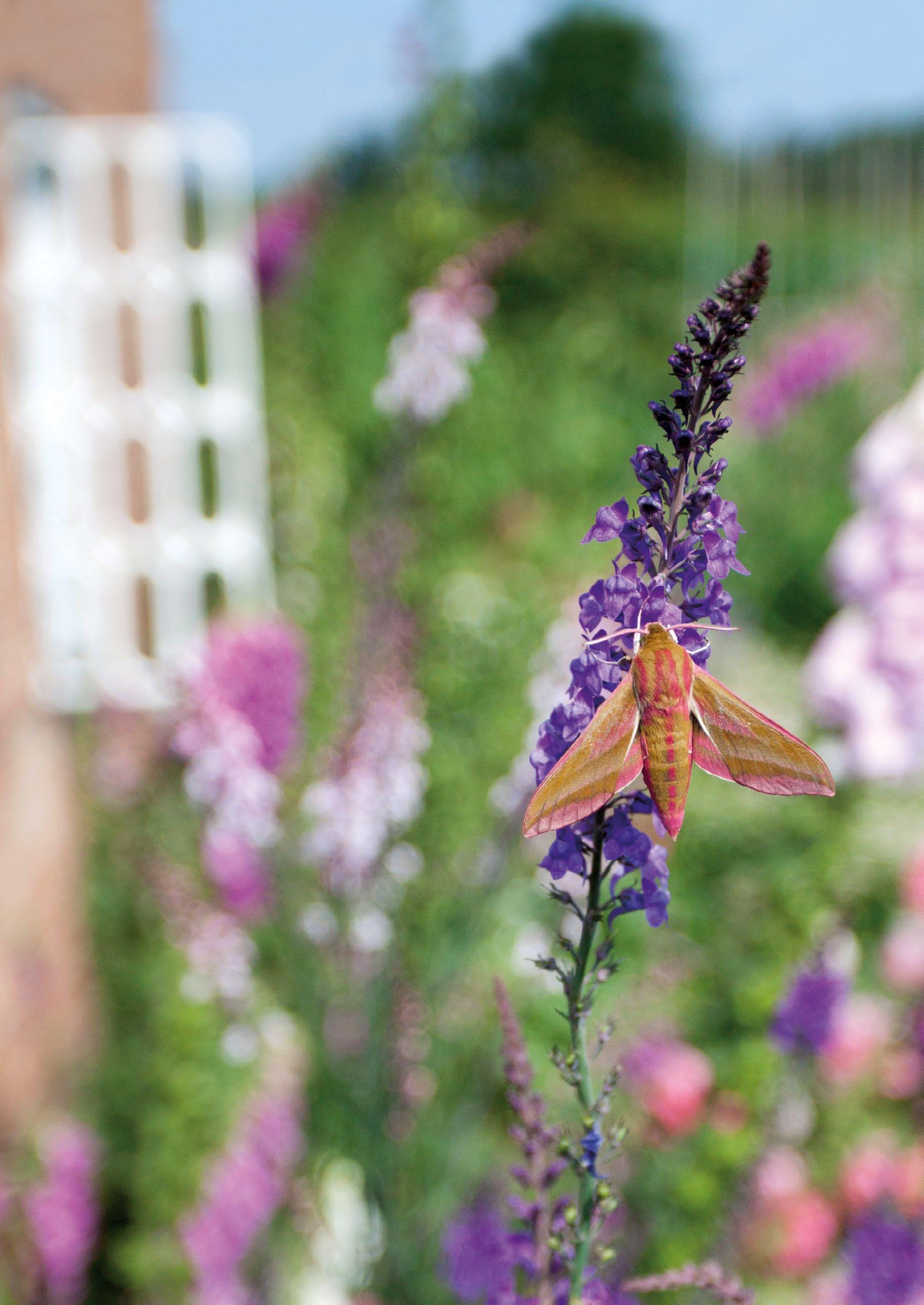
Tell us what you’ve done for wildlife and apply for our ‘My Wild Garden’ award today at lancswt.org.uk

you for all of your support
Thank
@Lancashirewildlifetrust @lancswildlife




 Tom Burditt, Chief Executive Officer
Tom Burditt, Chief Executive Officer























































































































 Murmuration, by Deborah Shackleton
Murmuration, by Deborah Shackleton








